How To Start A Perennial Garden On Shoestring Budget
Budget garden ideas that are big on impact but easy on the pocket are more obvious than you think. After all, a great looking outdoor space isn't only achieved by throwing mega bucks at them and it's perfectly possible to achieve a beautiful and cosy garden, on the cheap.
Think cheap but totally chic garden ideas – whether you are just sprucing your patio area or completely redesigning your outdoor space. If the latter is your project at hand then hard landscaping will be the most expensive – and often inescapable – part. But, there are lots of ways to cut costs when both landscaping and decorating if you just want to brighten up your garden for the warmer months.
How can I make my garden look nice, cheaply?
There is so much you can do to transform your garden on a budget. Planting is by far the cheapest and easiest way to add colour and interest, and then it's all about getting creative and more hands-on with the rest of your outdoor space.
To point you in the right direction we've gathered our best cheap gardening tips below along with more advice from professional horticulturists, landscapers and garden designers.*
1. Group small pots full of bright flowers
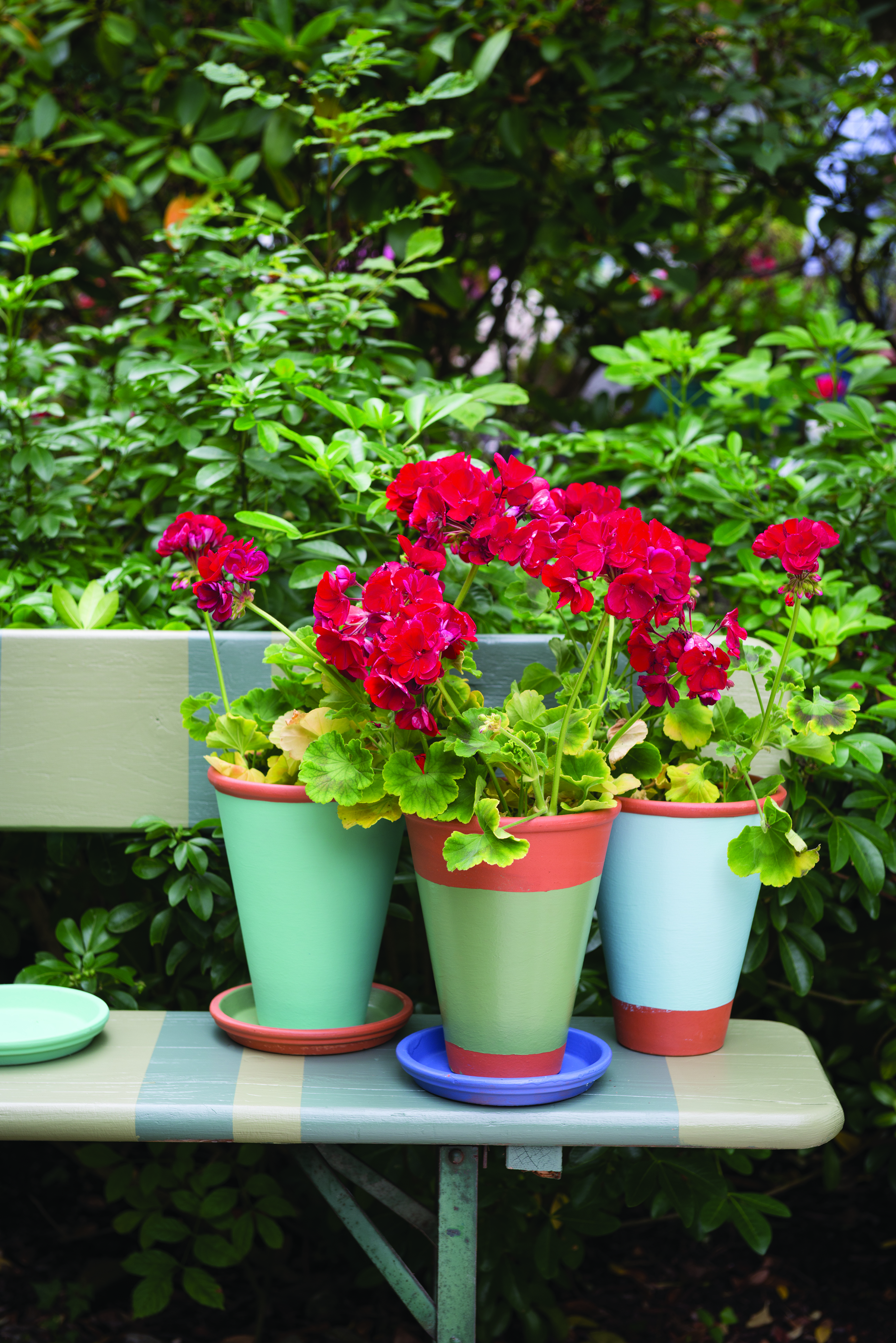
(Image credit: Farrow & Ball)
Planting colourful flowers in pots and containers is a really budget-friendly way to decorate a garden. Flowers are inexpensive, decorative and are often the first thing that guests are drawn to. They're especially effective in a small space, on a terrace or patio, or in a courtyard without a lawn where they can be seen from indoors. You could even display them on a junk yard find like a step ladder to create a really cheap but effective garden feature.
Garden landscaper, Ellen Wright says, 'Baskets and pots can brighten up any outdoor space, and you don't need expert gardening skills to plant them. There's an array of hanging baskets and pot types for all budgets; you can even choose most flowers and plants depending on your personal preference.'
Ideal if you don't have space for beds, plus, these will be easy to maintain and change up should you want a new look.
- See our advice on container gardening for more inspiration.
2. See vertical planting as a cost-cutting garden technique
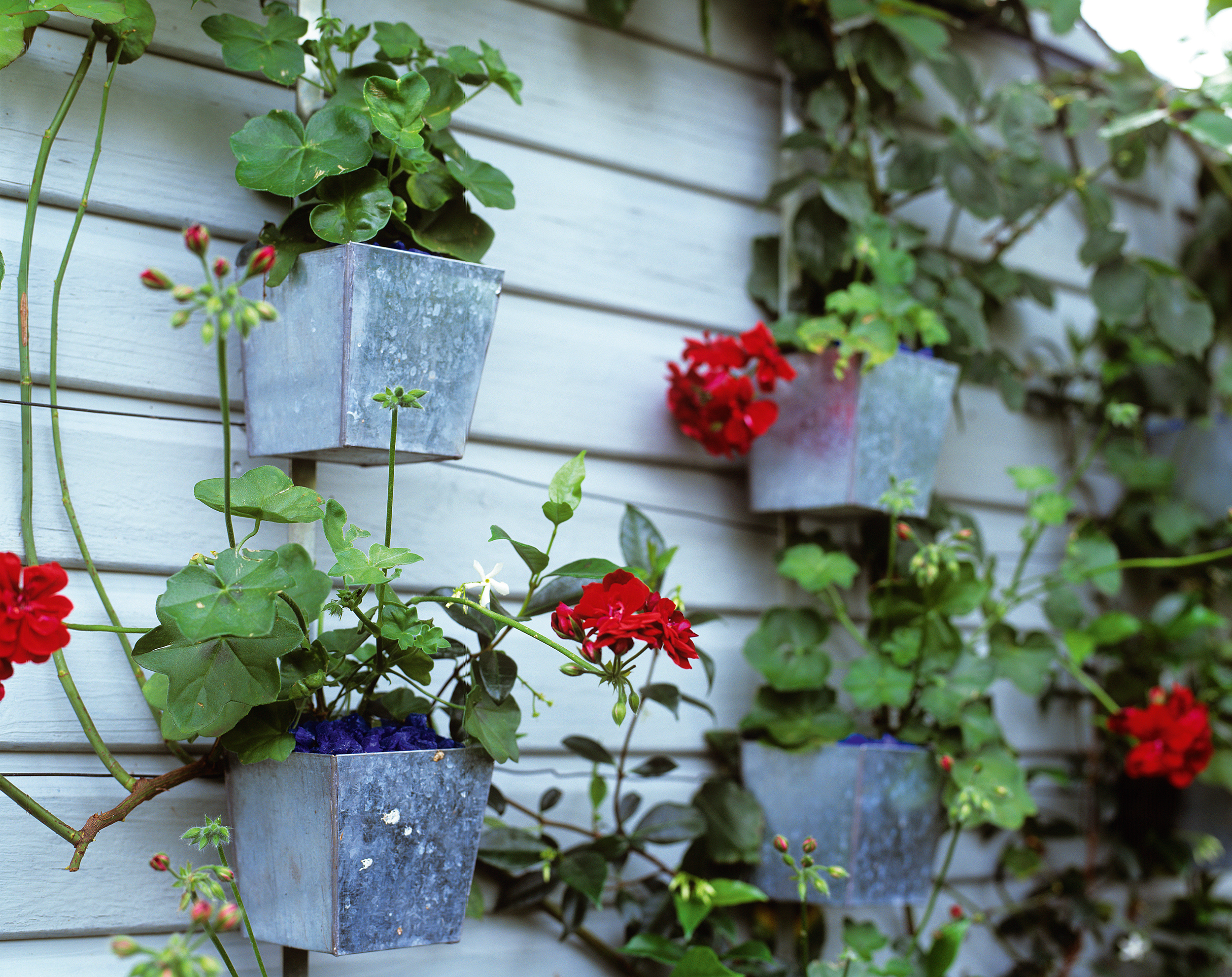
(Image credit: Leigh Clapp)
Create impact with vertical planting: we're talking pots fixed to walls, vertical gardens and plants that grow upwards, whether trees, larger shrubs, climbers or hedges, especially those good for quickly creating privacy, screening and security.
The cheapest option (other than a few plants in pots, like those above) is to start with fast-growing climbers, such as clematis armandii or wisteria. Buy the maturest plant you can afford for quicker results. Another option is to use hanging planters with plants that trail, or creating living walls.
- Find more fabulous garden screening ideas in our edit.
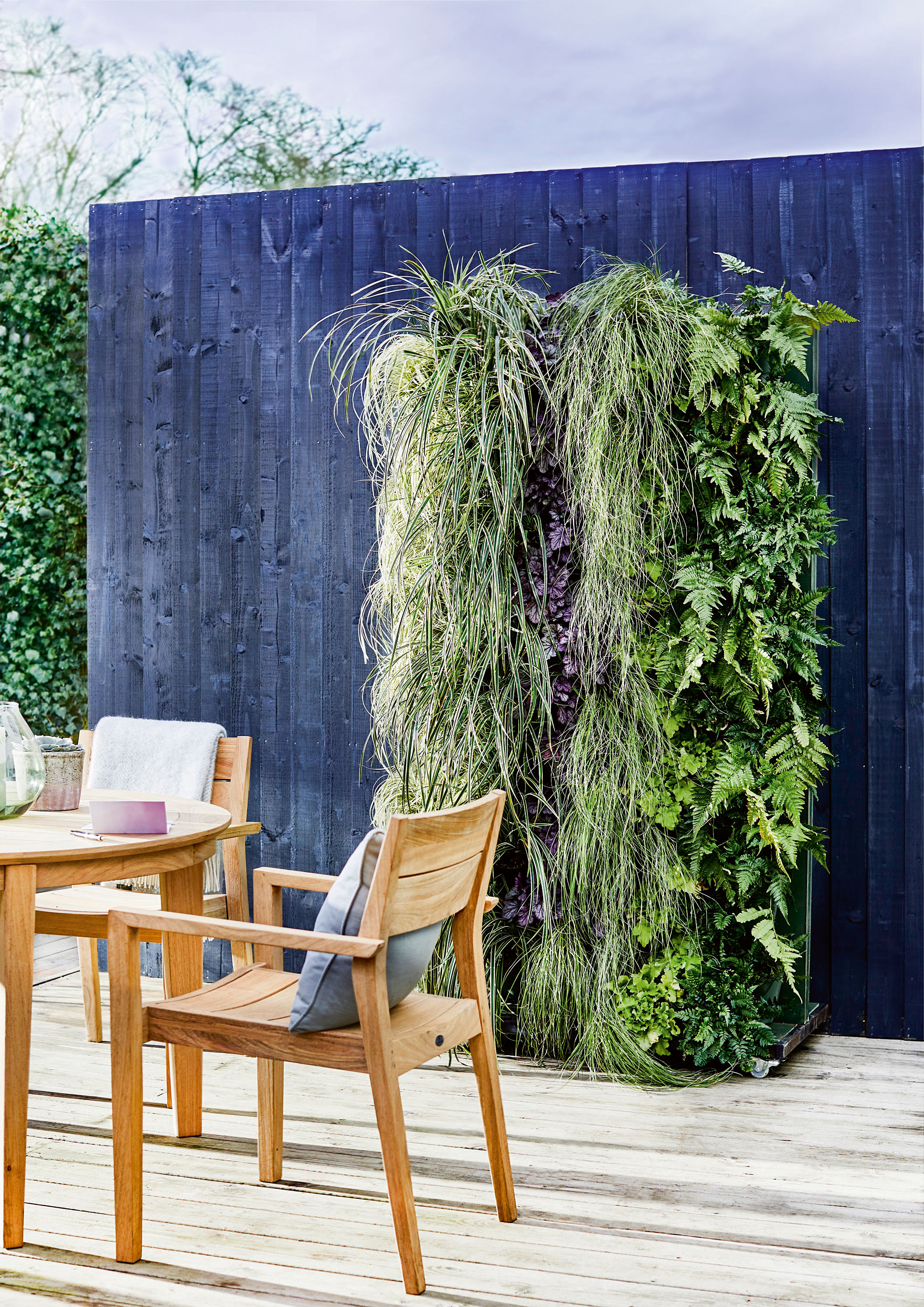
(Image credit: Dobbies)
3. Plant fast-growing climbers or invest in one stand-out specimen
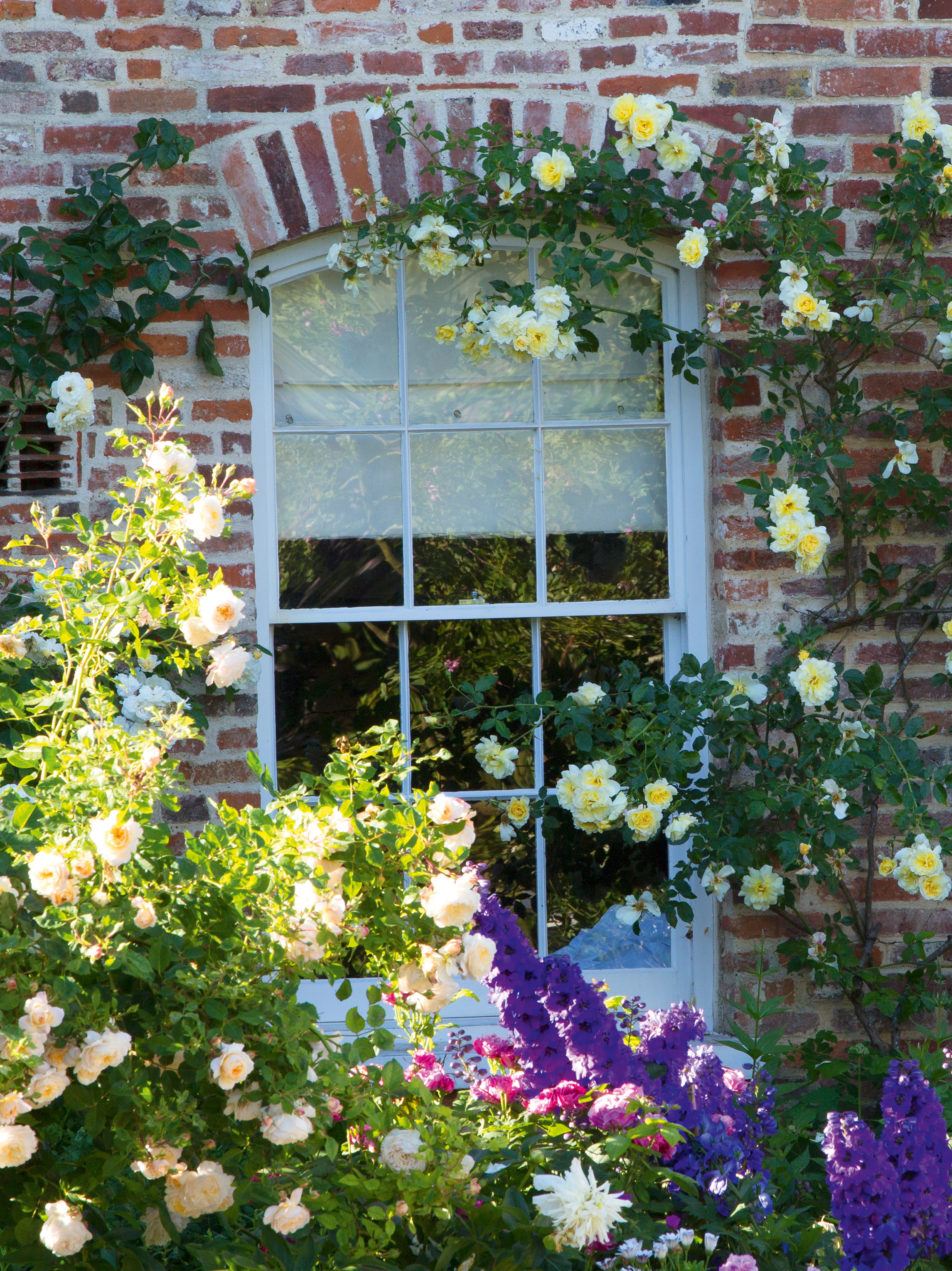
(Image credit: Leigh Clapp)
Got a little more to spend? Using one of the best small trees to create a ceiling for your garden, in the same way a pergola or gazebo would, is always going to be a cheaper option than having a whole new structure built. Specimen plants give a garden an instant sense of substance and proportion, which is difficult to achieve otherwise. The same can be said for borders: instead of paying a contractor to build a fence, invest in hedges, climbing plants and grasses to define the border and increase garden privacy and security.
Again, it's always worth investing in the largest plants you can afford for quicker impact.
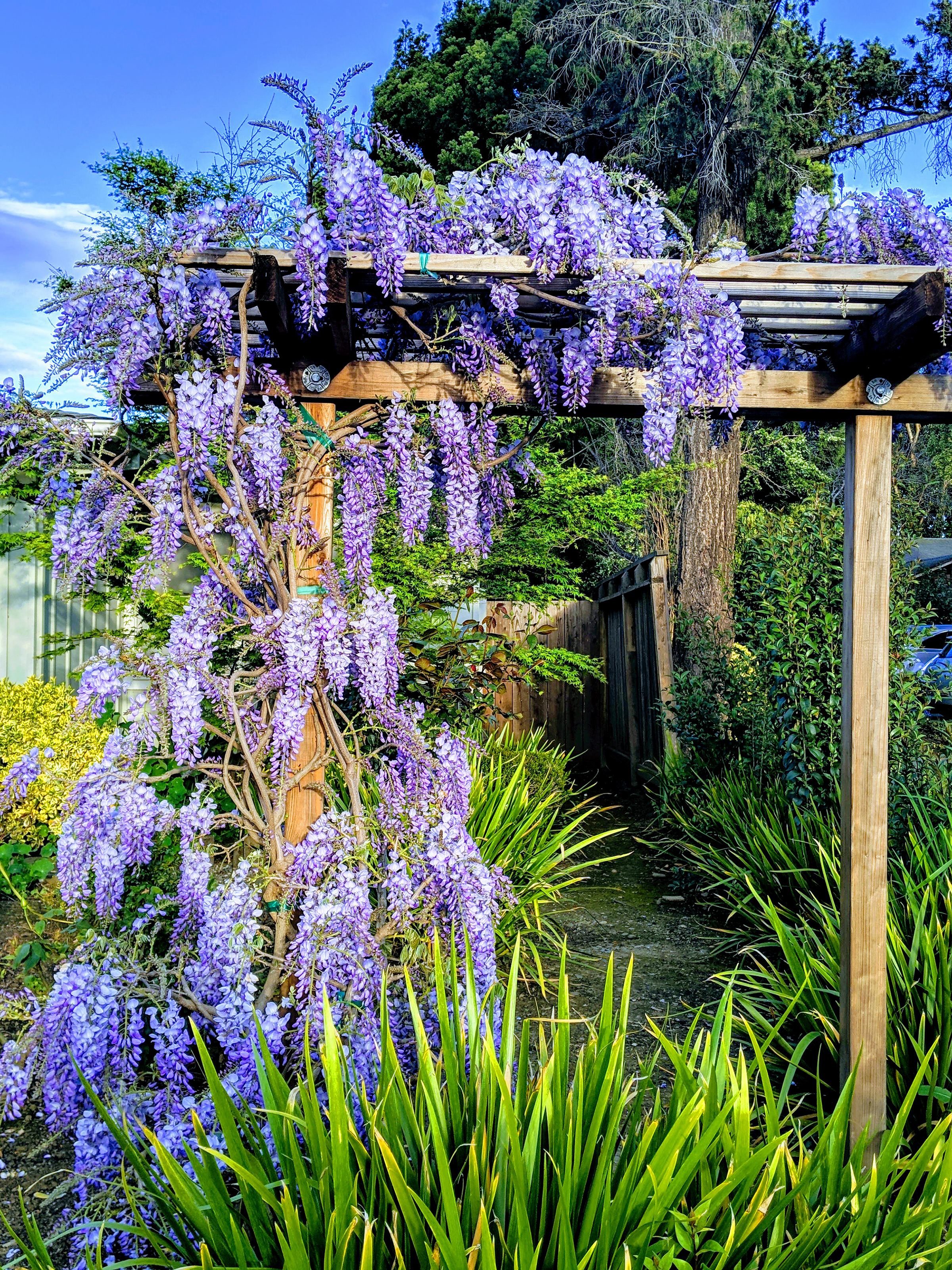
(Image credit: Getty Images)
- Use our guide to making an impact with mature plants .
4. Grow your own with patience
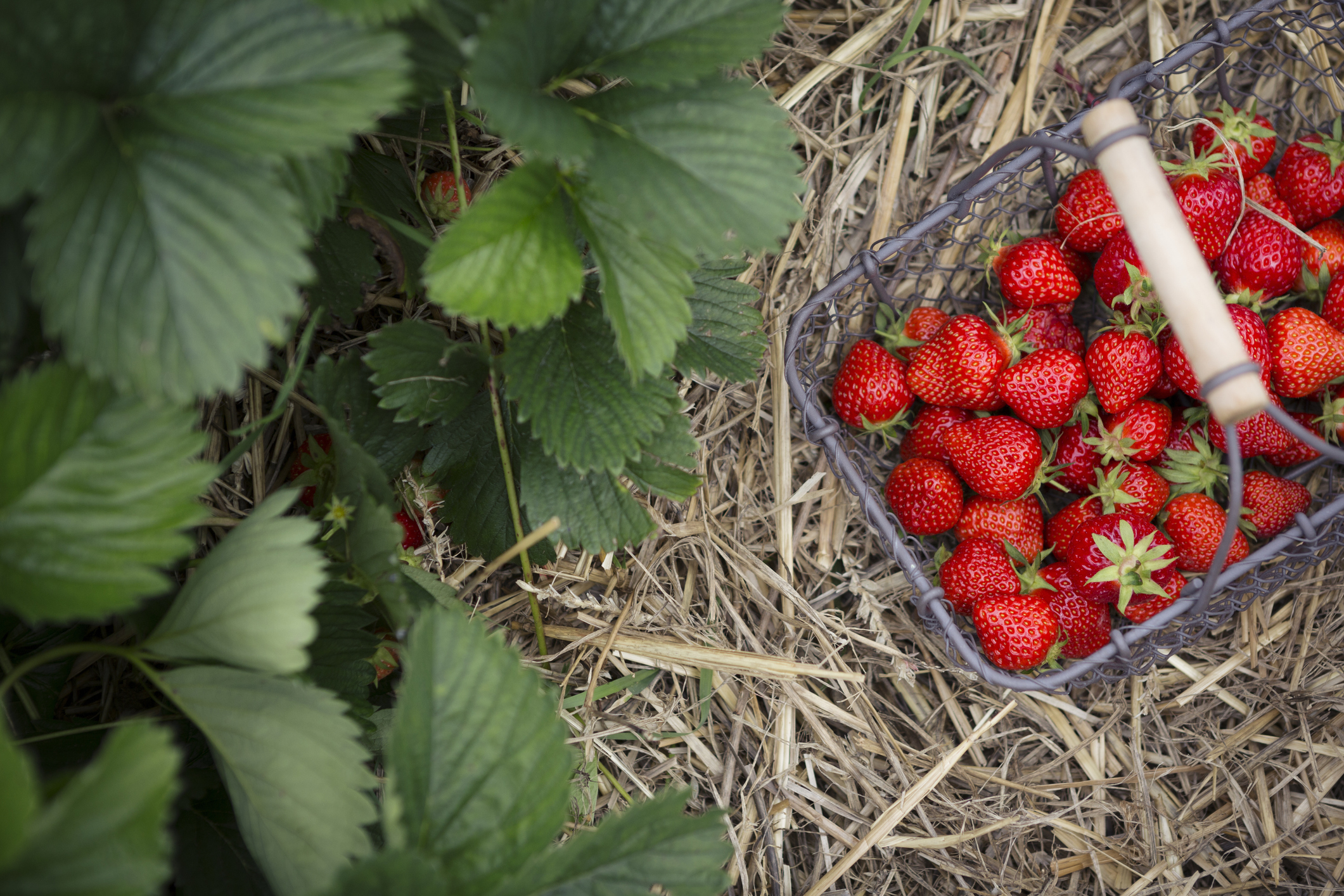
(Image credit: Getty)
On the other hand, instead of buying plants that will immediately achieve your desired look, invest in smaller, younger plants to save money – and which with a little bit of support can grow to the same size quickly.
This is even more applicable when growing your own fruit and veg, as growing from seed is much more cost-effective and higher yielding than buying lots of starter pots from garden centres. Horticulture and landscaping lecturer Julie Kilpatrick, says, 'It can be very tempting to go to the local garden centre and buy the larger, more mature, plants so you get an instant effect. Young plants are cheaper and grow reasonably fast with the right care. They also adapt far quicker to the environmental conditions specific to your garden. Mature plants look great in the short-term but they might take so long to settle that younger plants will catch up and may even overtake them.'
- See our gardening for beginners guide to get your veg patch started.
5. Plant shrubs and herbs for year-round interest
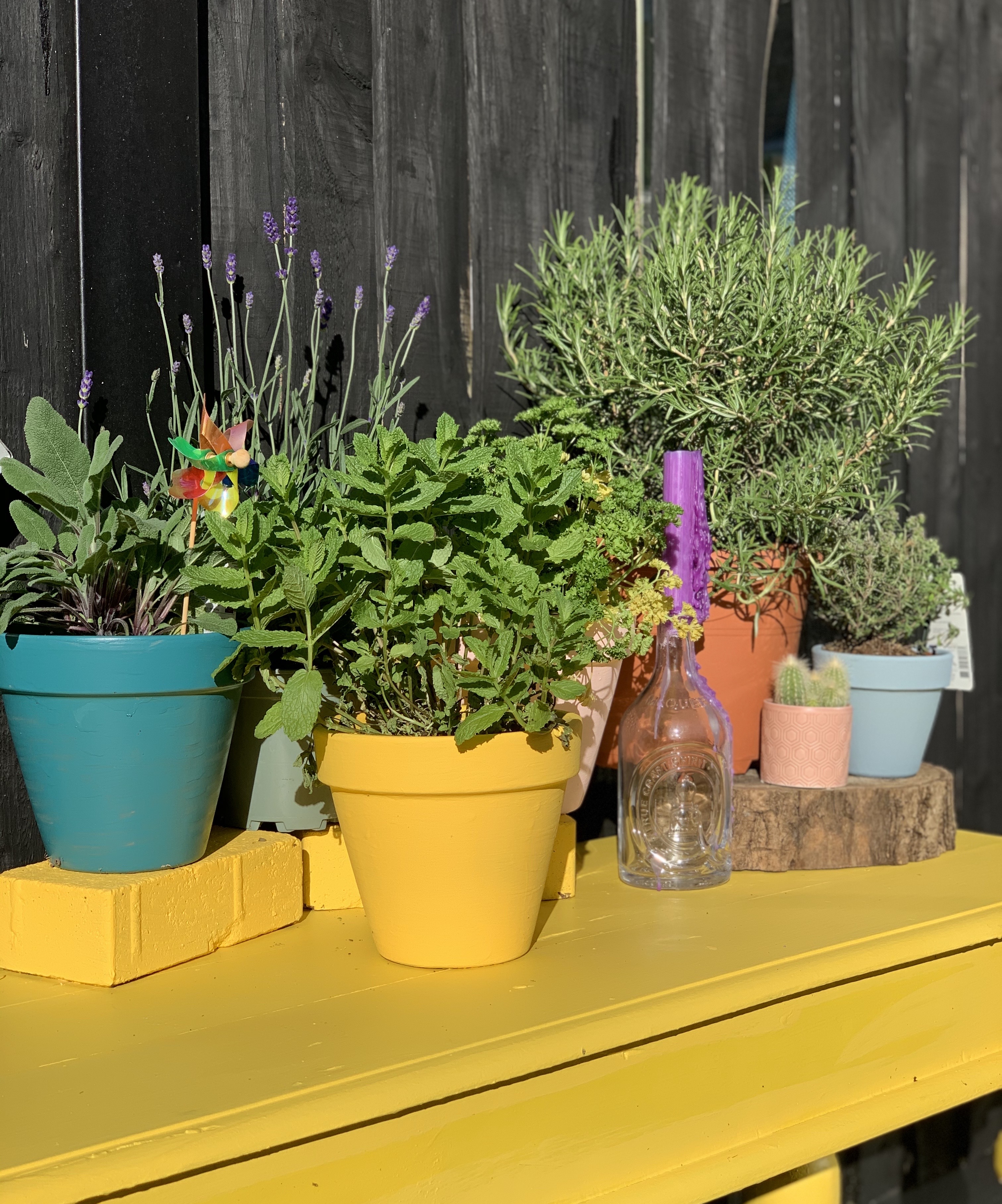
(Image credit: Emily Smith)
Remember to use a mixture of good-value shrubs, including those that will flower, fruit or have interesting autumn foliage, such as Sarcococca confusa or Viburnum. Use these with a mixture of spring, summer and autumn flowering herbaceous perennials. These come back year after year without the need to buy again, so they are long lasting and relatively low maintenance, as well as representing great value for money.
You can also plant many shrubs – and even some small trees – or even start a herb garden in containers, if space is tight or if you're moving and want to take them with you when you go (for an instant garden at your new home).
6. Plant perennials to spend out just once
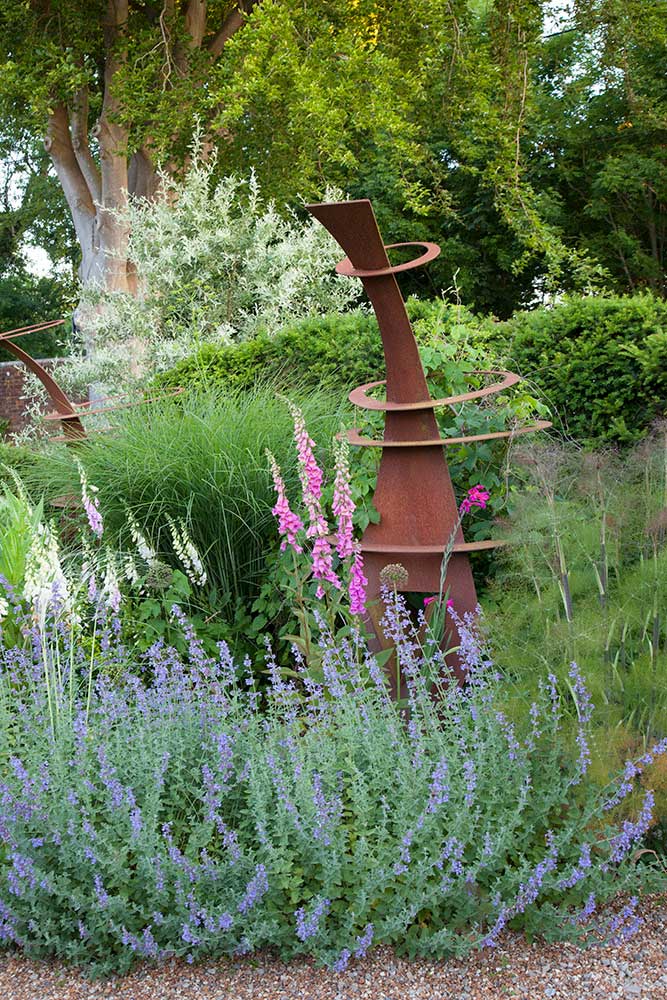
(Image credit: Future/Abigail Rex)
Putting in perennials means you'll spend out just once, because they will last not just year round, but for years and years. Work out the total number of square metres of your planting beds and allow five shrubs or perennials for each metre. Shop around at garden centres and nurseries and expect to pay hardly anything at all. Join a local gardening club and pick up knowledge and cuttings or small plants for sale at a discounted rate, saving more to make your budget go further.
Herbaceous perennials such as lavender and rosemary do especially well in garden borders, year after year.
7. Make a planting table with old pallets
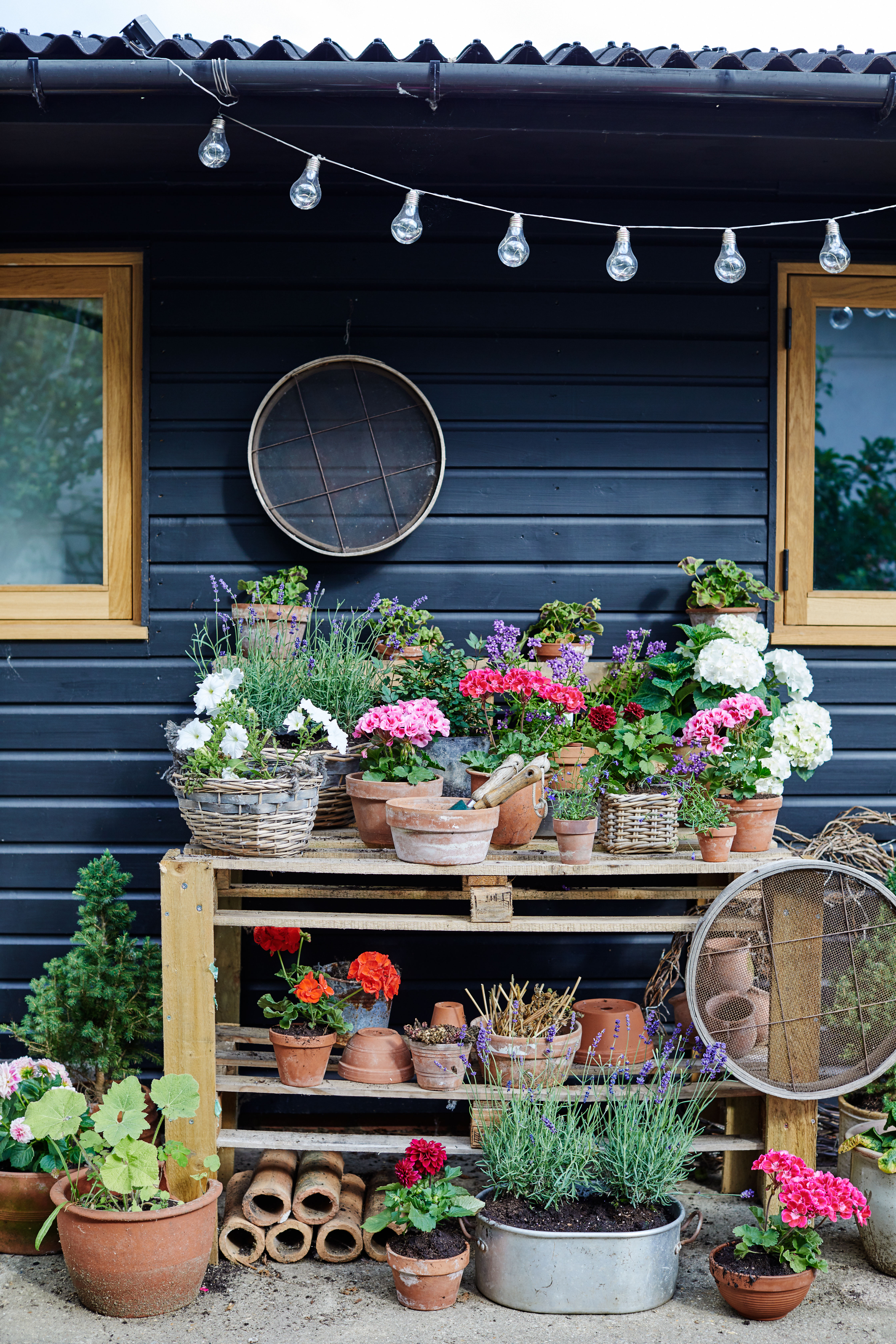
(Image credit: Future / Brent Darby)
Use this pallet converted into a table as a planting table or to display a collection of pots planted out with bright blooms. Simple, free, effective.
8. Paint the garden shed and garden furniture to match
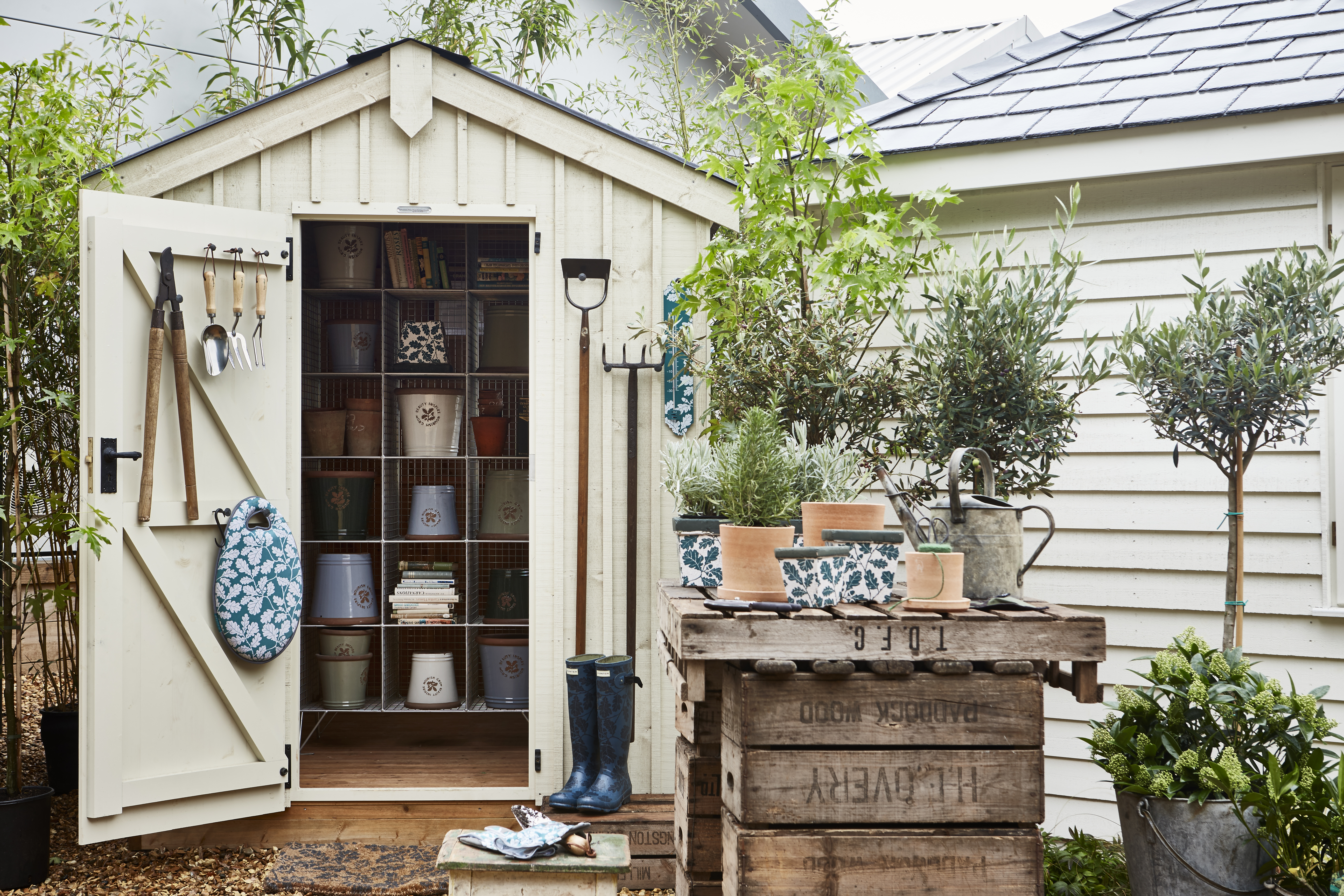
(Image credit: The National Trust)
Eyesore of a shed ruining your garden? Giving yours a lick of paint – and painting wooden or metal garden furniture to complement the colour of the shed will give your garden an instant boost. You may even want to go to town and paint fences too.
Wright recommends 'If your fences or shed are looking shabby and unloved, giving them a new lick of paint can brighten up the garden. There are a lot of wood paints and stains available in a variety of different colours depending on your taste. It's recommended to use a wood protective paint to ensure any fences or sheds are protected from the elements and prevented from rotting.'
Our advice: choose your garden colour scheme carefully: the more natural it is – pale grey green paint shades – or the darker it is – think blacks and dark blues – the more you will show off your planting. Avoid anything garish which will compete with your blooms for attention.
- We'd advise you use the best paint sprayer you can afford.
9. Style your shed like a summer house
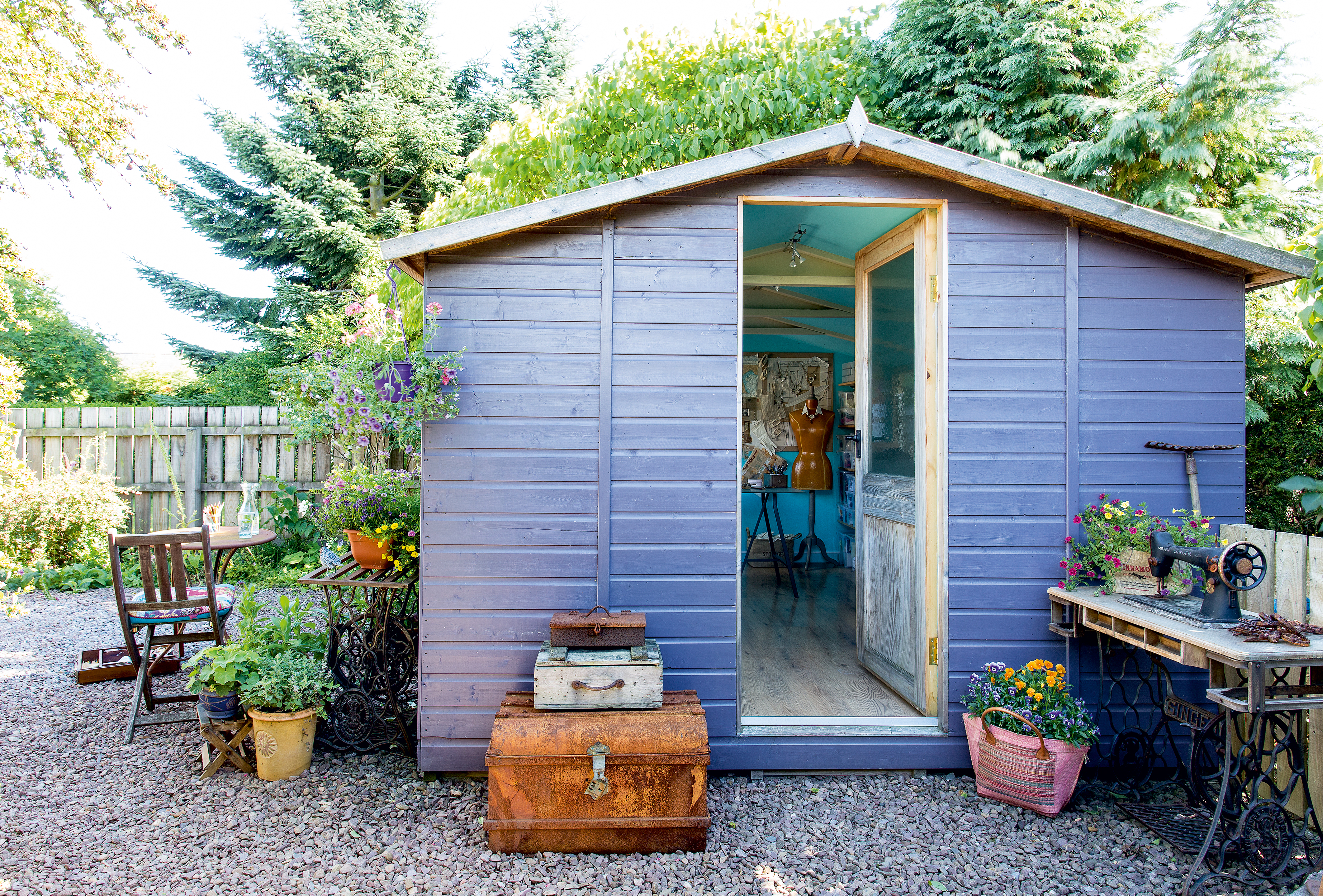
Want a summerhouse but can only afford a shed? There's no reason not to buy the best shed your money can buy with windows and paint it inside and out to style it up like a summerhouse.
- Find more summer house ideas in our edit.
10. DIY your outdoor kitchen
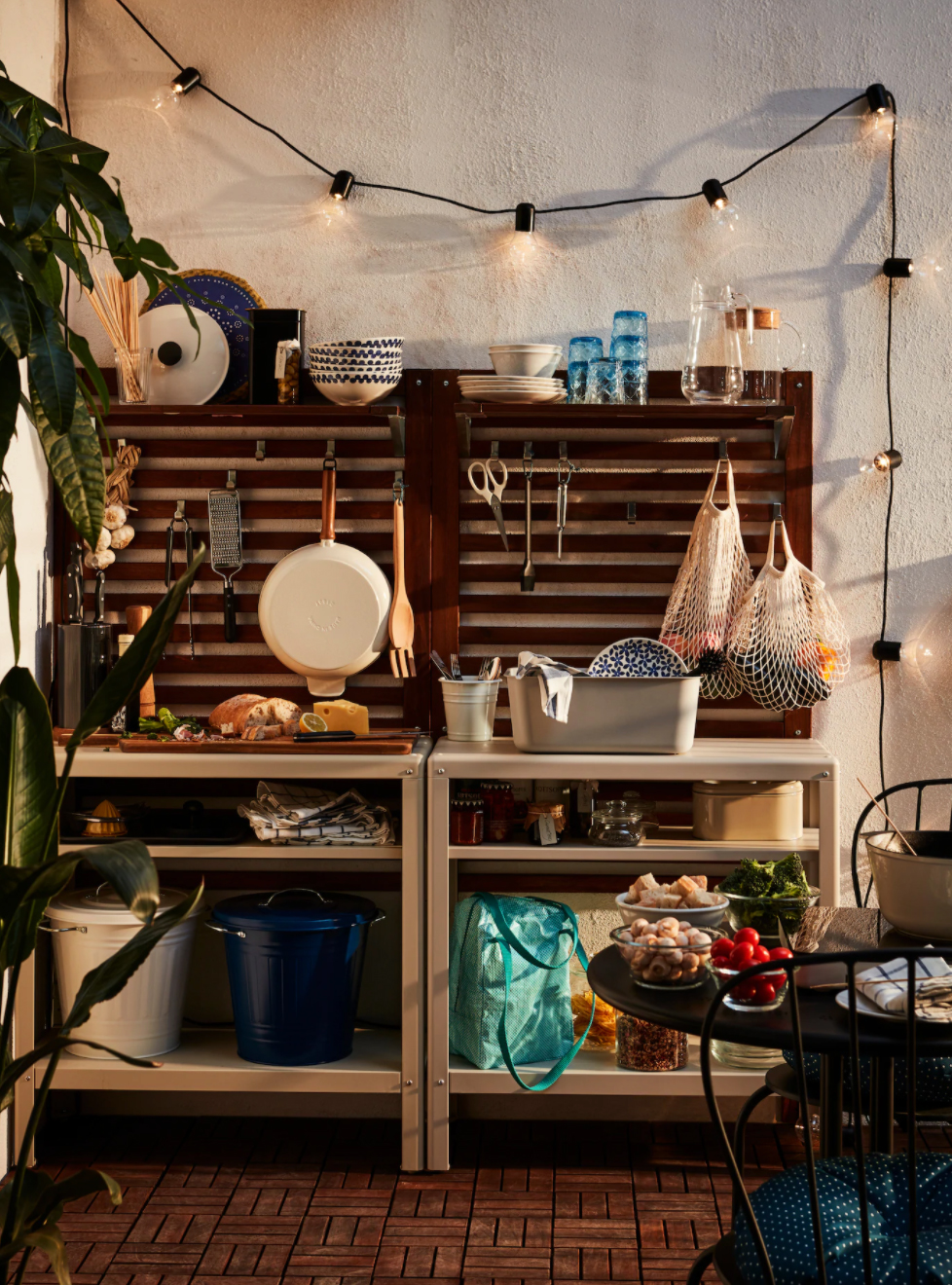
(Image credit: Ikea)
Outdoor kitchens might be all the rage, but you can easily create your own without going to town – a table top barbecue atop a sturdy garden table gets you half way there.
11. Paint the deck and garden furniture to match

(Image credit: Future)
One of the simplest decking ideas going yet it creates a just-like new look, although we have to say it might become an annual one if you want it all to stay that way. Coordinate your planting to complement the paint colours? Even better.
- Into that garden room? Check out our guide to fitting outbuildings yourself.
12. Paint garden walls for instant impact
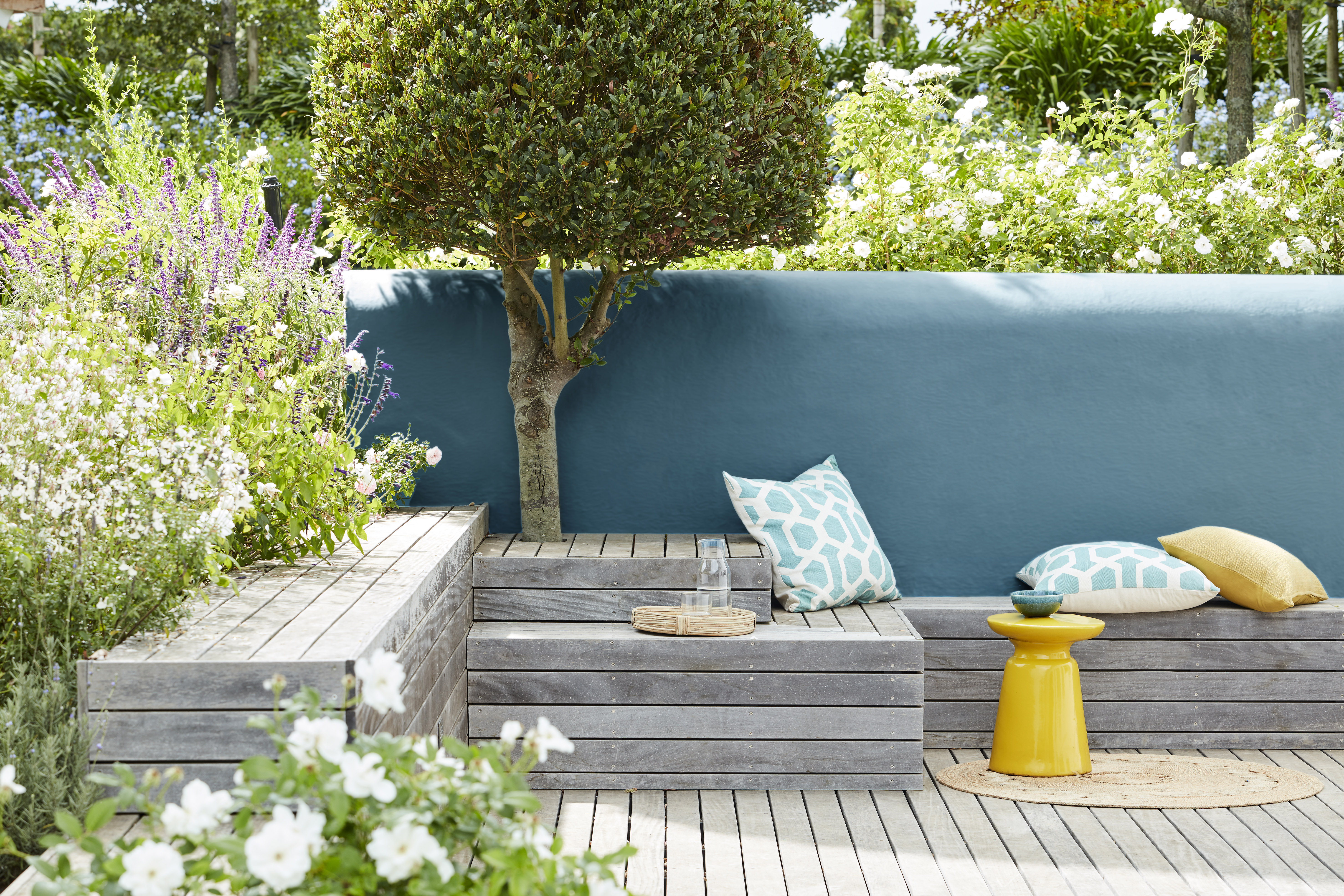
(Image credit: Little Greene)
Paint: it's sooo cheap yet the impact is so great. Pick a colour that really shows off your planting: deeper shades work best.
13. Get creative to turn ugly features into pretty ones
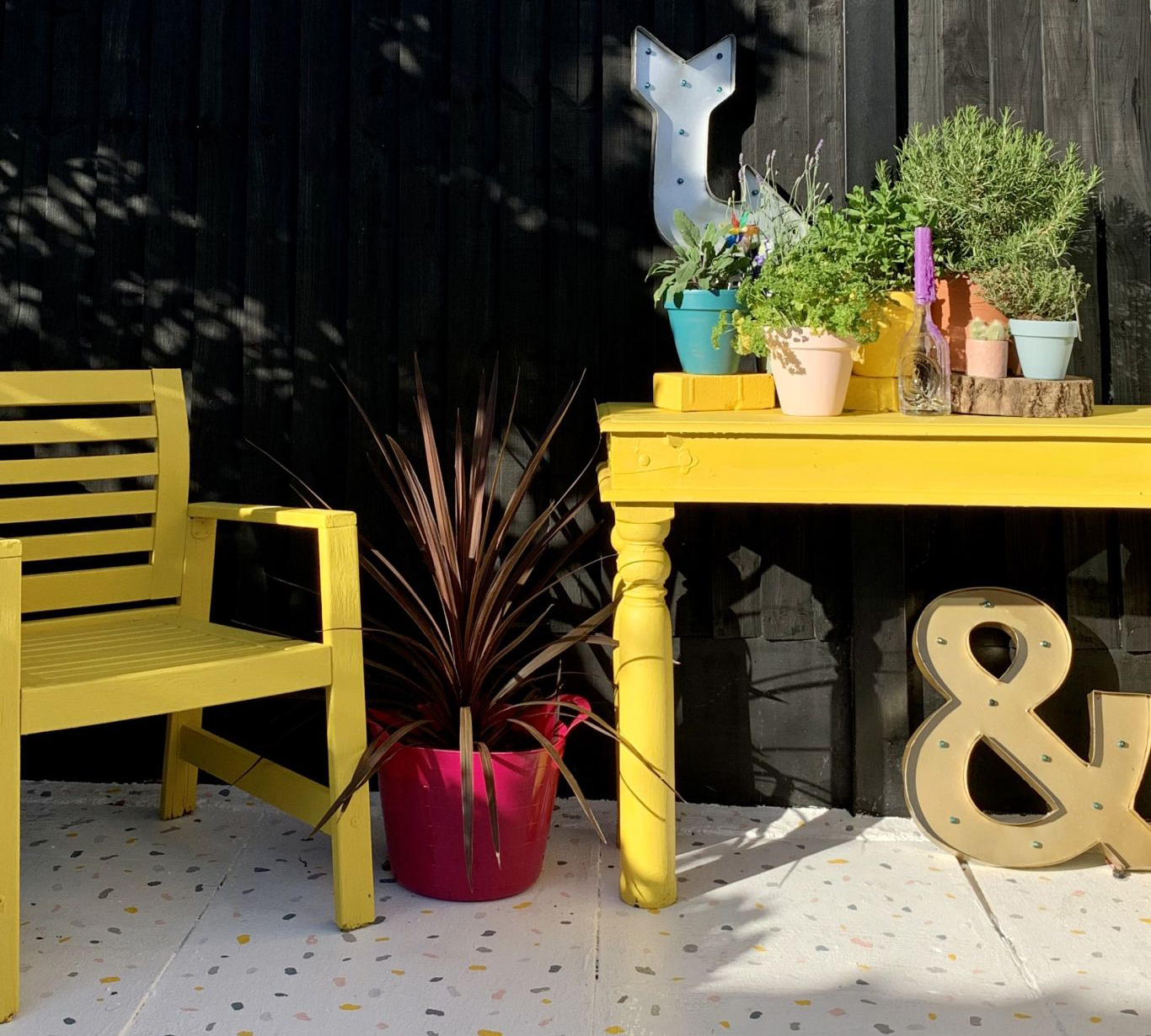
(Image credit: Emily Smith)
How nice are the garden floor tiles in this garden? The good news is they're not expensive or designer: in fact, they're ugly concrete tiles that have been painted with specialist exterior floor paint to give them an on-trend terrazzo look. Cost? Barely £100.
14. Save on clearance costs by repurposing old landscaping
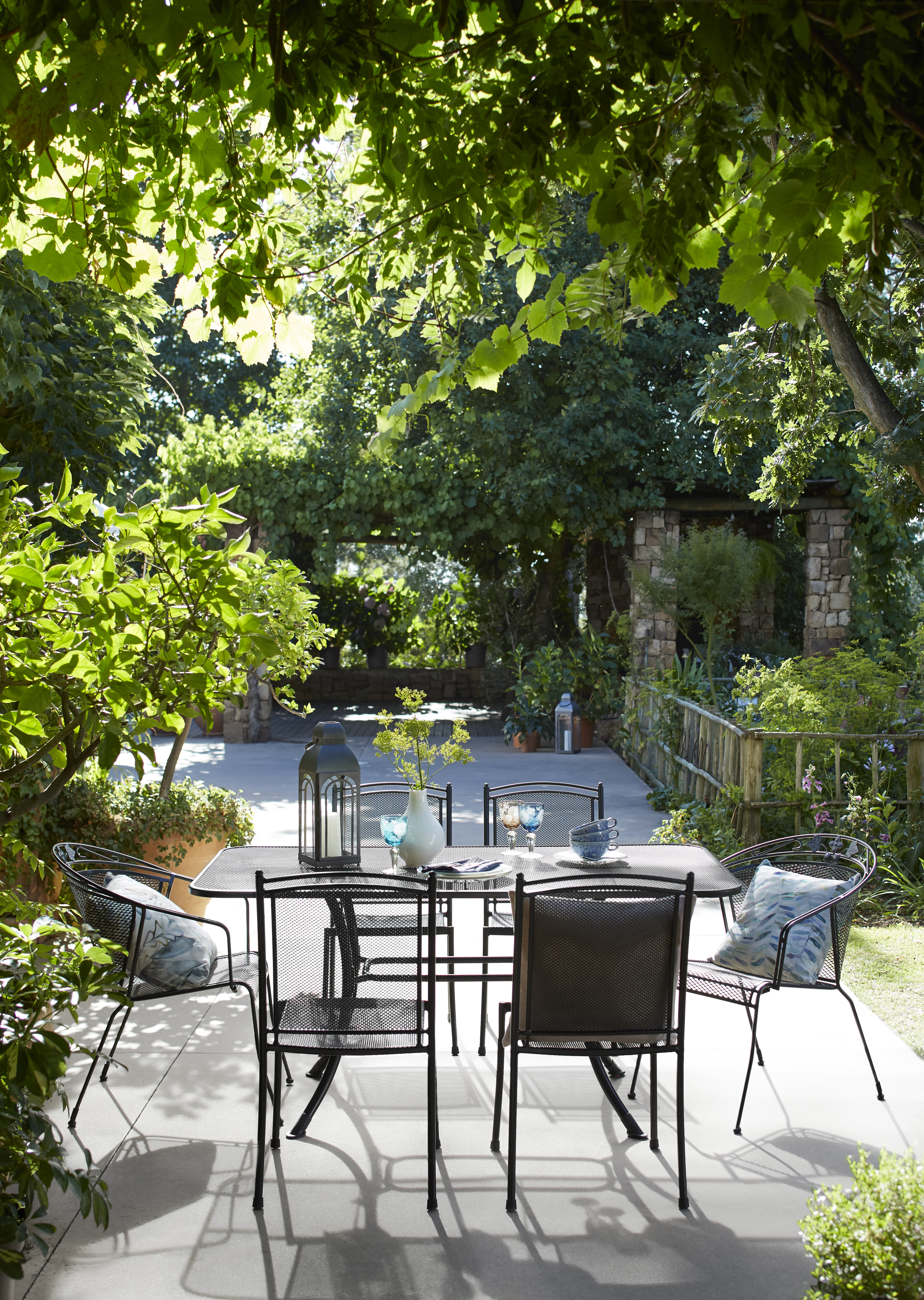
(Image credit: John Lewis)
Demolition and site clearance can cost a lot, especially if access is tricky and work needs to be done by hand. A small garden that needs a lot of clearance, and that has poor access, might cost thousands. So, wherever possible, DIY, reuse or recycle is key – an old concrete pad for a shed you've pulled down could be reused or used as a base for a deck. Garden designer Christine Barve explains, 'If you have old bits of slab and bricks, upcycle them into a simple path or small area for a bistro table and chairs. Bed them firmly into soil, checking their level with each other and you're ready to go.'
Or, if it's thick and the surface is sound, it could be the perfect sub-base for attractive (but inexpensive) exterior tiles, as long as adding them won't raise the height so much that the damp-proof course of an adjoining house is compromised.
15. Go for gravel and the like
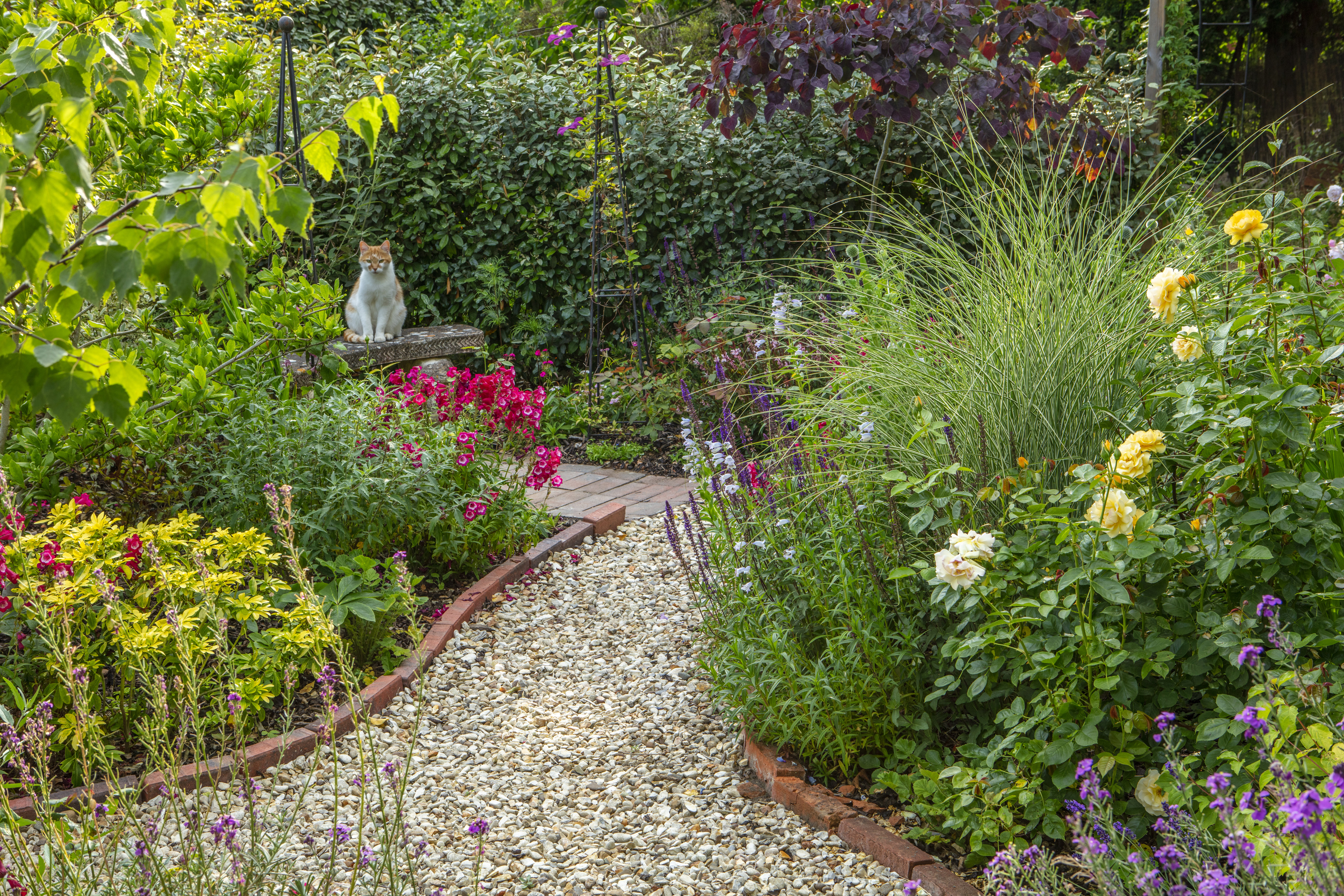
(Image credit: Clive Nichols)
There's always a way to reduce the costs of garden landscaping. For seating areas, a solid surface is essential, but elsewhere cheaper gravel, or even bark, will do. Both are easy to lay on landscape fabric to keep the weeds down, and you can break up a large area of gravel with oak sleepers or ground cover planting. Gravel is, in fact, one of the cheapest materials for your garden, and you can learn how to lay gravel yourself. Barve explains, 'Gravel and good quality weed membrane can make a very usable and relatively cheap path or patio. You don't need to have a hardcore base for lightly used areas. Just make sure the soil is compacted and reasonably level.'
Dry stacked stone or rendered blockwork costs less than 'faced' brickwork, while Western red cedar decking is cheaper than other decking timber, and works just as well.
'If you live in a red-brick property, for a harmonious look try dark greys or warm earthy tones, and steer away from buff or yellow. If you live in a limestone property, warm, similar-toned paving and chippings will ultimately look best,' says Paul Harvey-Brookes, RHS judge and award-winning garden designer.
'When planning paving, you can reduce the cost by infilling with gravel, and replacing natural stone with cast pavers can look equally as good and save money. You can often find similar materials at a fraction of the price and consider visiting building merchants or reclamation yards, too.'
- Click to buy gravel from B&Q
- Click to buy gravel from Wickes
- Click to buy gravel from Travis Perkins
- Click to buy gravel from Homebase
- Find the best gravel for your garden in our buying guide.
16. Plan in advance and look for bargains
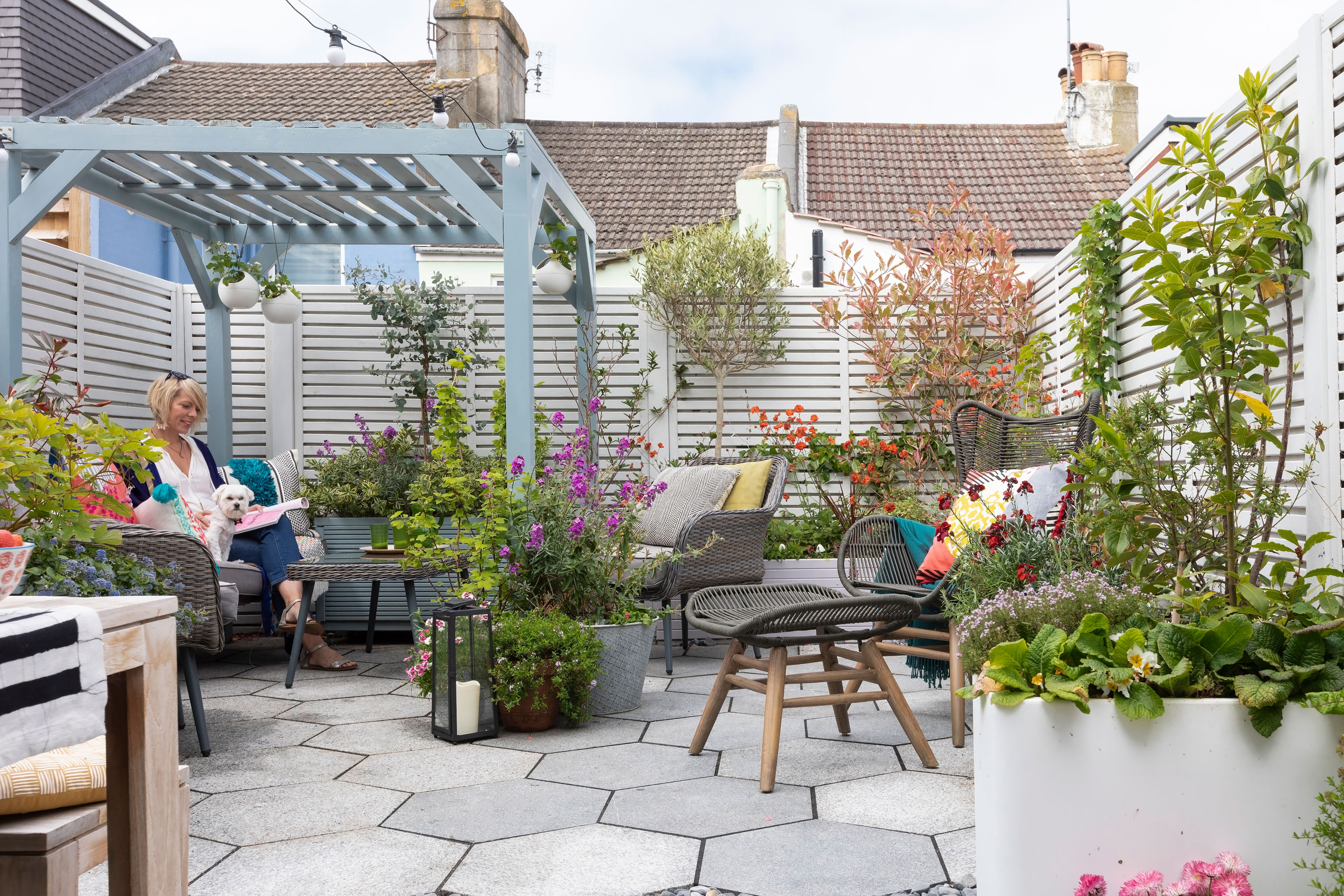
(Image credit: Fiona Walker-Arnott)
This pergola has been painted to create a cute, co-ordinated finish in this garden – and the good news is that we found something similar – the Blooma Rafter Garden pergola – from B&Q for just £60.
Remember, a large overall sum for a redesign doesn't need to be spent all at once. Implementing a design proposal can be phased as and when money is available. So, in year one, construct the hard landscape, for example, such as the patio, walls and paths. Build ponds, pergolas and water features (unless they're built-in) in year two and plant in year three.
- See how to build a pergola yourself.
17. Always negotiate with professionals
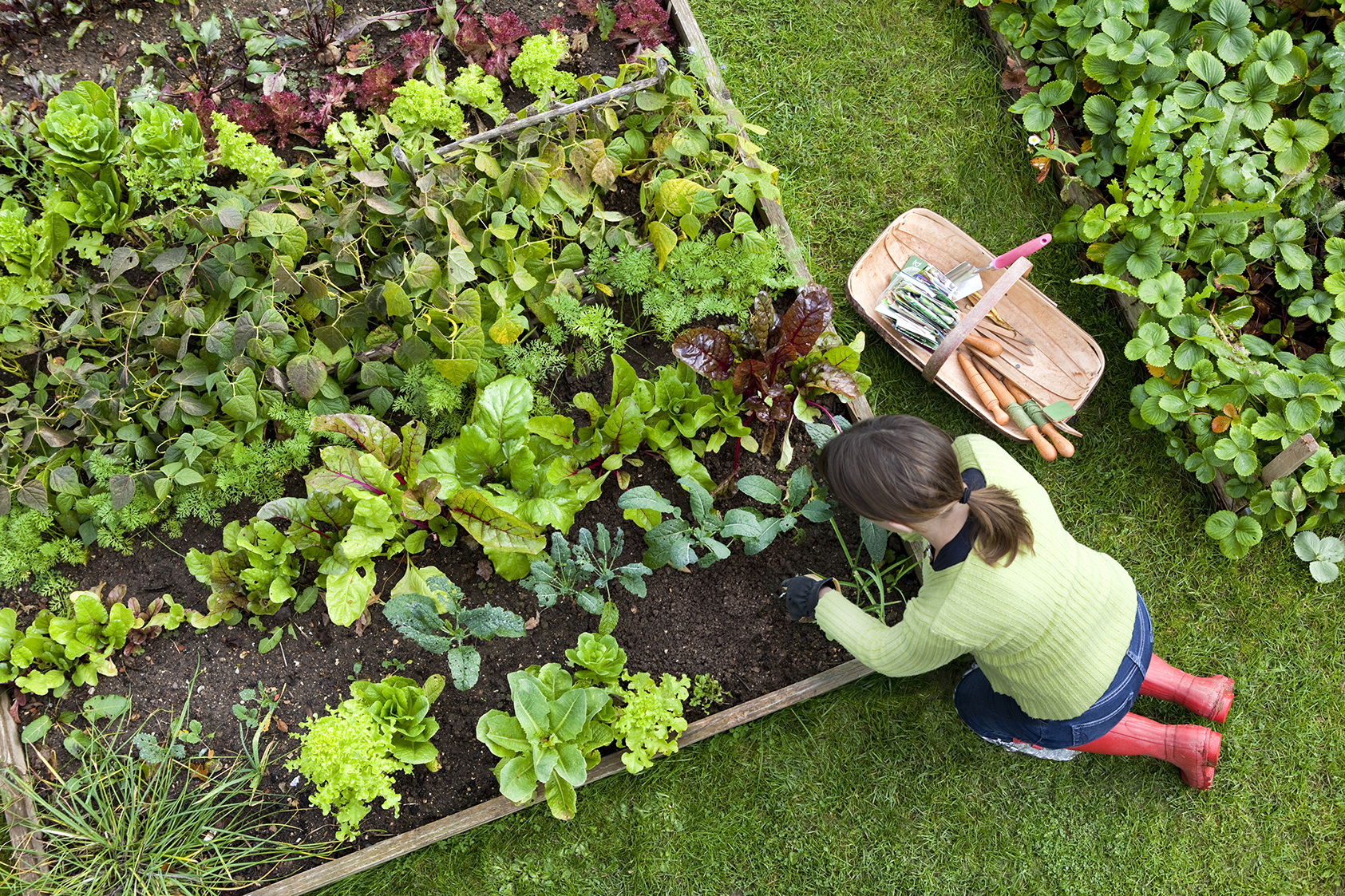
(Image credit: Getty Images)
An experienced garden designer can save you time and money in the long term, helping with everything from planning the entire garden and managing contractors, to guidance on where best to proportion your budget.
When you're sprucing your garden remember that you don't always have to spend a fortune to get a good job out of specialists, and certainly don't forget to negotiate. Many prices aren't fixed and it's possible you can get a better deal if you ask, and often you can just ask for their expertise for one day and it will make all the difference if you really have no idea where to start. Their ideas or even plant recommendations to suit your garden's soil will be invaluable. Search online, checking out client testimonials, or visit the Society of Garden Designers and the British Association of Landscape Industries if you're UK-based.
The same applies to materials for your garden according to Kilpatrick, 'If you have to buy new materials, the best place to buy them is at a builder's merchants rather than a DIY store. Most builder's merchants will negotiate with you on price. Get a written quote from one builder's merchant and show it to another. Nine times out of ten, they will want to beat their competitor's price.'
18. Remember to keep it simple
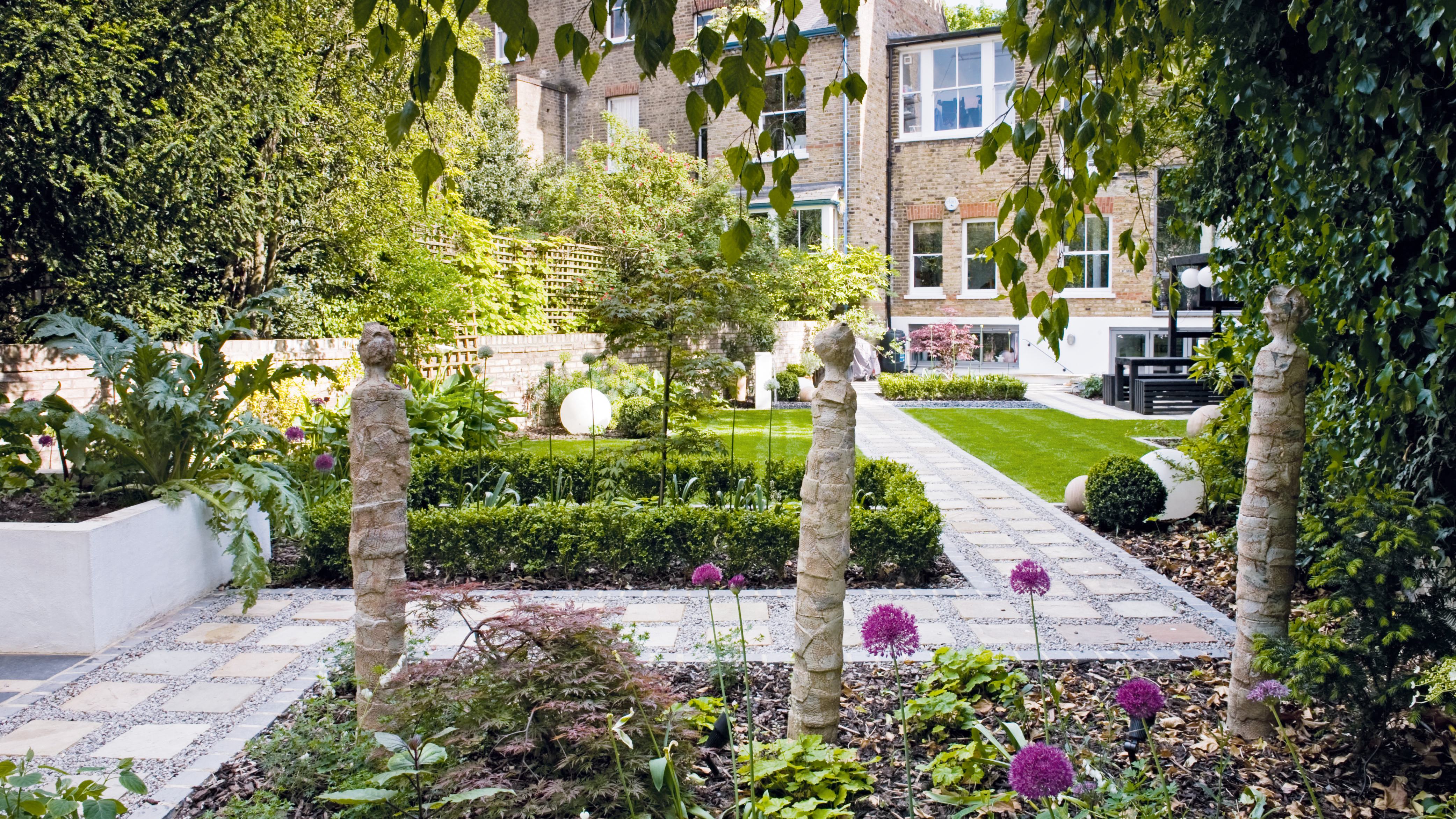
This contemporary garden in north London has straight pathways and lawns
(Image credit: Marcus Harpur)
Complex curved walls, fences and patterns in paving cost a lot, as they are tricky to create. Garden building materials are usually designed for simple spaces, so adapting them for different angles and curves will result in some wastage.
Simple straight runs are far easier to build and usually look better, especially in urban and suburban gardens where unity between the garden and your home's architecture is important.
- Find more simple garden ideas in our edit.
19. Stick to cost-saving designs
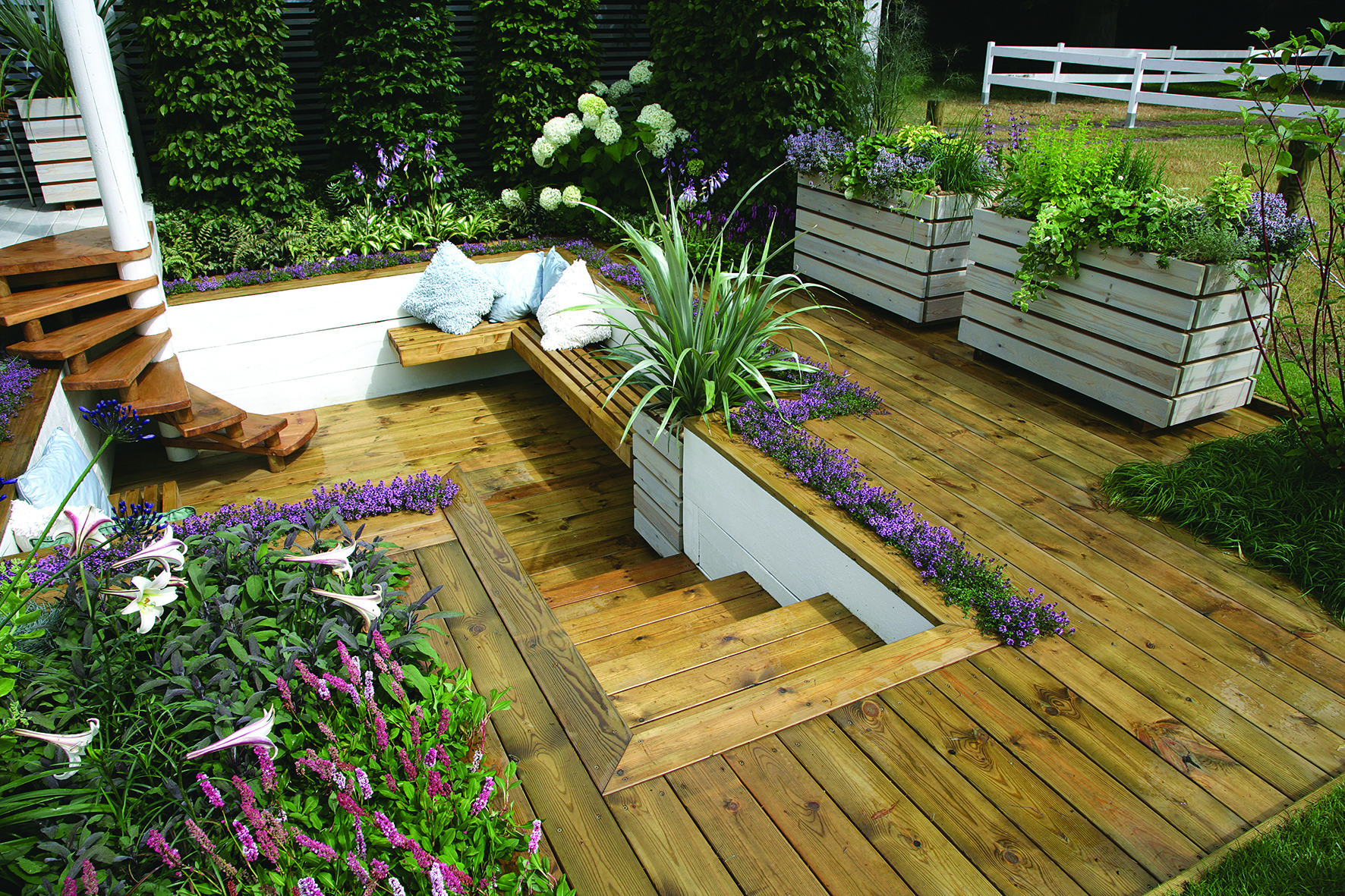
(Image credit: Sadolin)
Some garden layouts can be expensive to work with, and sometimes there's little above ground to show for the time and money you've invested. Go for a design that minimises the need for extensive groundworks, foundations and drainage. One or two level plateaux built into the slope, for somewhere to site a dining table or a couple of sun loungers, could be enough 'useable' space.
Solutions such as decking are also useful, needing just a few foundations for the sub-frame, unlike paved areas, which are either built on top of, or into, a slope, and are therefore much more costly.
- Find more sloping garden ideas in our dedicated feature.
20. Use inexpensive cladding to cut the cost of garden landscaping
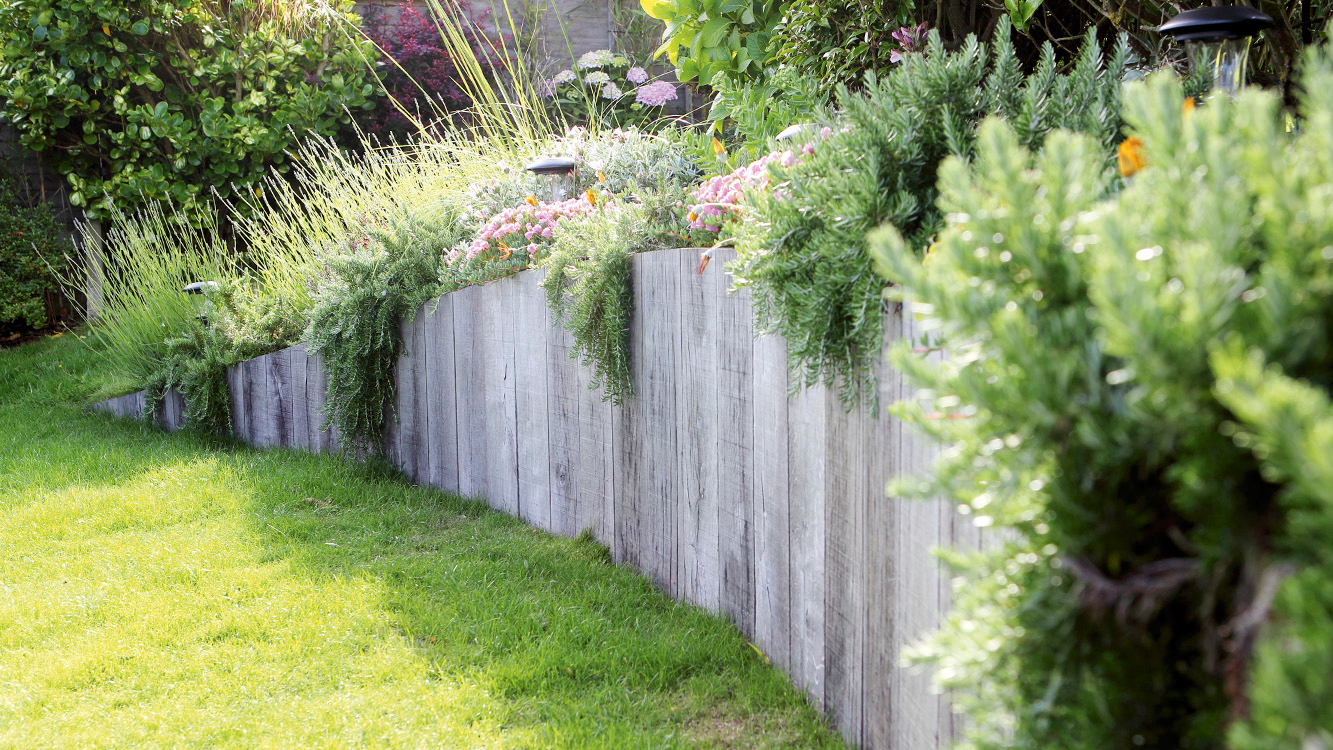
Terrace sloping spaces for more usable space. This bespoke border from South Hams Fencing and Landscaping works perfectly in a country setting as a retaining wall to split levels, £175 per metre
An expanse of concrete or an unattractive boundary wall doesn't always require removal and replacement; you could cover or clad it instead. For vertical surfaces, close-knit trellis, woven hazel hurdles, thinly spaced cedar strips attached to wooden battens behind, coloured concrete render.
- We have plenty garden fence design ideas for you to consider.
21. Use reclaimed garden materials
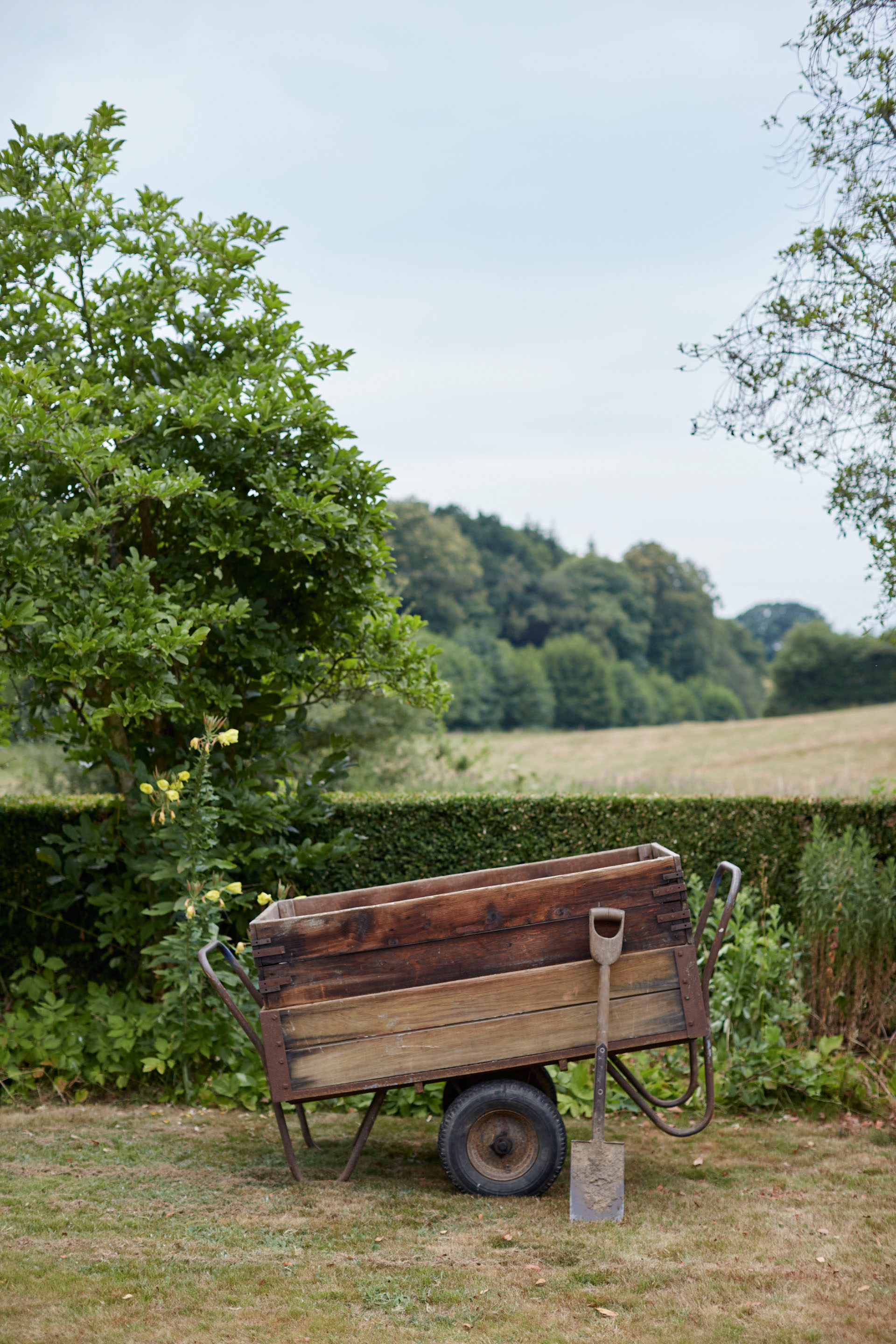
(Image credit: Brent Darby)
Recycled materials often look better than new, particularly around traditional buildings, and it's possible to pick up a bargain. Reclamation yards can be pricey, especially those in cities, so take a day trip out to a country yard, as most will deliver.
Check Ebay, Gumtree and Freecycle as well as supermarket classifieds. You might not spot exactly what you originally wanted, but with a little imagination, it's possible to create truly unique features from your finds.
22. Do the garden labouring yourself
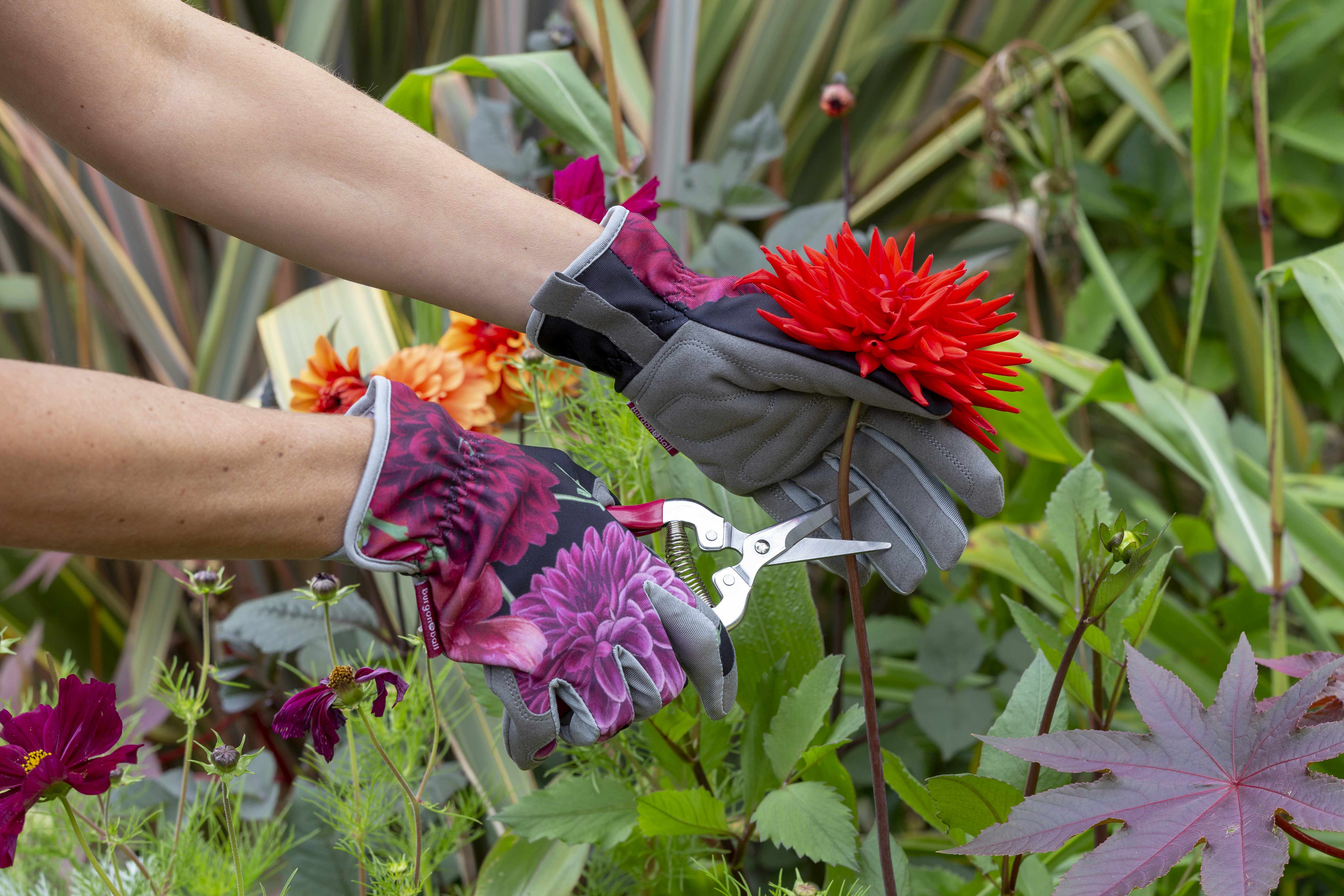
(Image credit: Burgon & Ball)
Labour costs can be more than 60 per cent of a garden redesign, so spend time considering what you can do yourself. Planting, laying a new lawn, erecting kit-form pergolas and arches, timber raised beds, simple plumbing – even a deck – are well within the scope of the DIY enthusiast.
You should know your limits, though. Paving, brickwork, extensive garden lighting and features such as dry-stone walls will need specialists. Choose local tradespeople to keep expenditure to a minimum. Use Checkatrade to find a local tradesman at the best price.
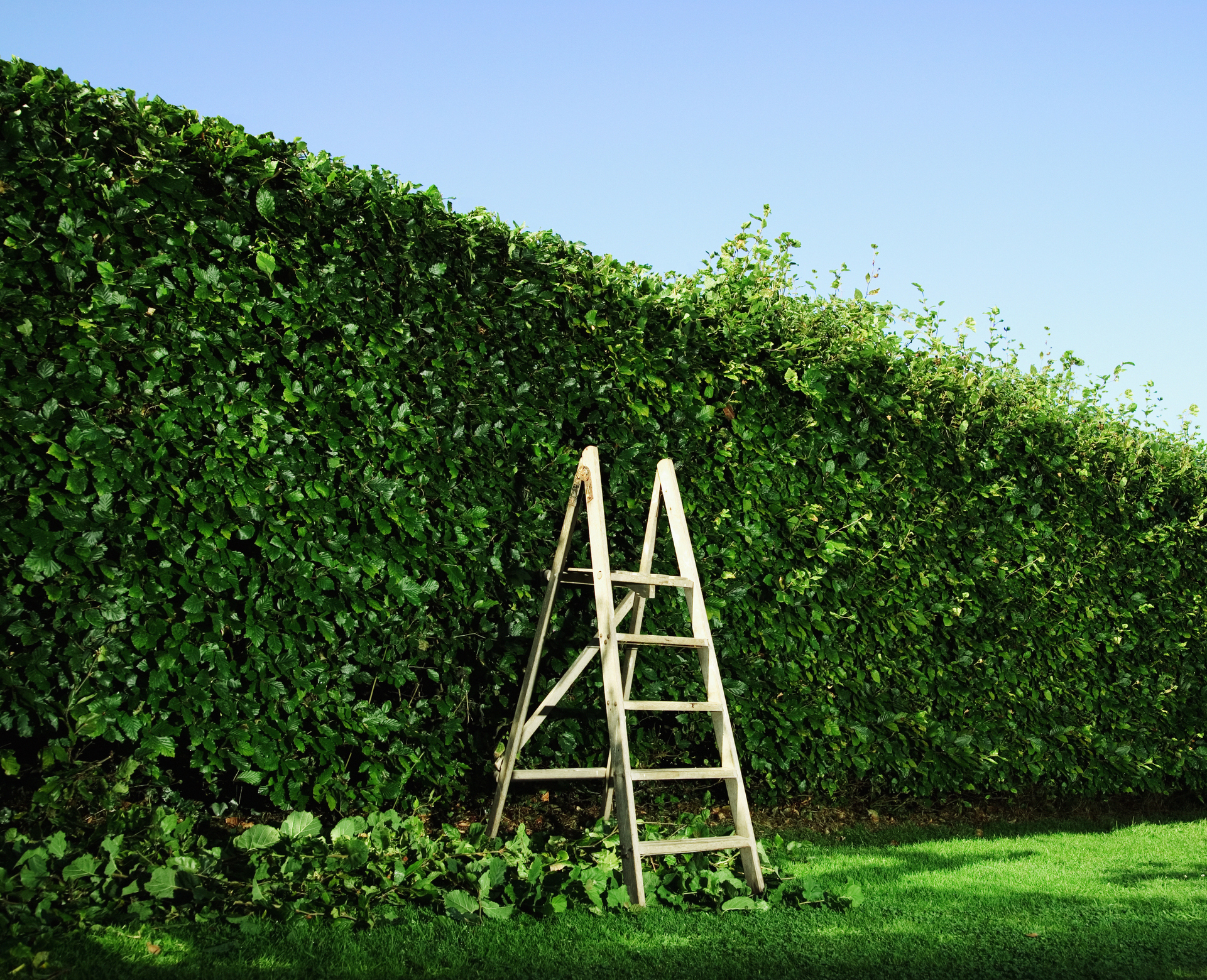
(Image credit: Getty Images)
Remember that it's not just time that buying the right garden tools can save – if your tools are of low quality, they might not be able to get the job done and could even break, meaning you'll need to buy new ones.
By paying for good quality tools in the first place, you can save more money overall and keep to the same tools for years to come. Kilpatrick, says, 'Using the right tools for the job will save you time and money. Always use sharpened tools in good condition and, if you are planning to cut wood by hand, buy a brand-new handsaw. You will find it much easier to cut with a new saw. If you need specialist tools, hire them. Mixing mortar and concrete by hand is time-consuming and extremely hard work. You can easily hire a cement mixer for a few days at a very low cost. For long runs of fencing, consider hiring a nail gun.'
24. Work outdoor lighting into your garden's landscape
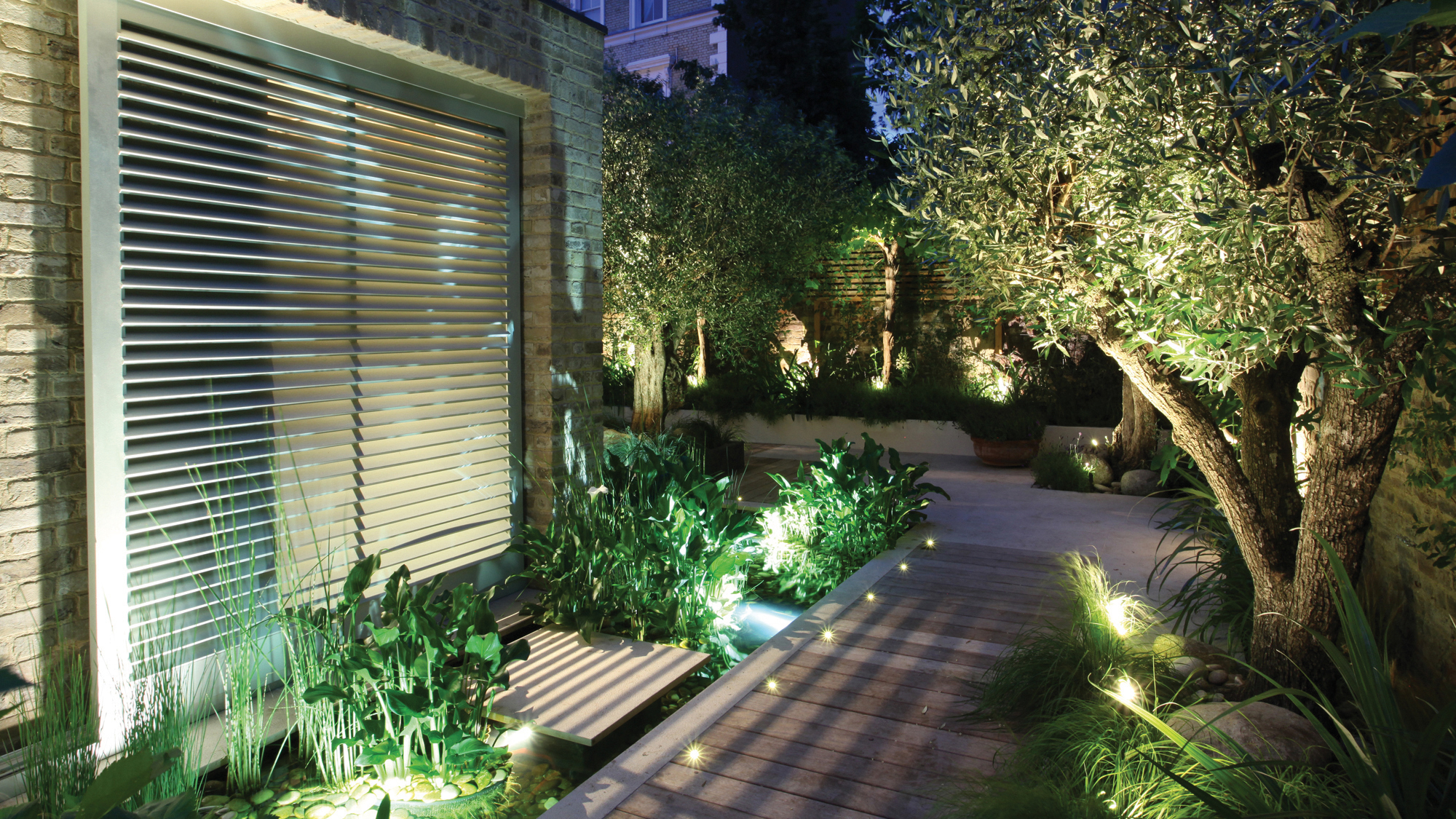
Create atmosphere and enjoy your garden 24/7 with accent lighting. Image John Cullen
(Image credit: John Cullen)
Garden lighting adds another dimension to any garden, as well as potentially extending the time you can spend outdoors. Solar lighting can be the cheapest – and is cheap to run, so start there.
To make the most of it, use lighting to illuminate trees, beds, water features and sculptures and it will feel like a completely different space at night. Waterproof festoon lights are a flexible, temporary and cheap solution to lighting your garden, and they will create a comfortable and casual atmosphere.
Cheaper spotlights are useful where fittings will be hidden by foliage, so you will save money if you decide to conceal your garden lighting. If you plan on spending a little more money, go for attractive fittings that will double as decorative features.
Always consult a qualified electrician for anything other than simple clip-together systems. Cable runs and the associated pipework need to be factored in very early on, even if you actually plan to install the system itself later, when further funds are available.
- Find more garden lighting ideas in our guide.
25. Use lawn edging to add definition to your borders
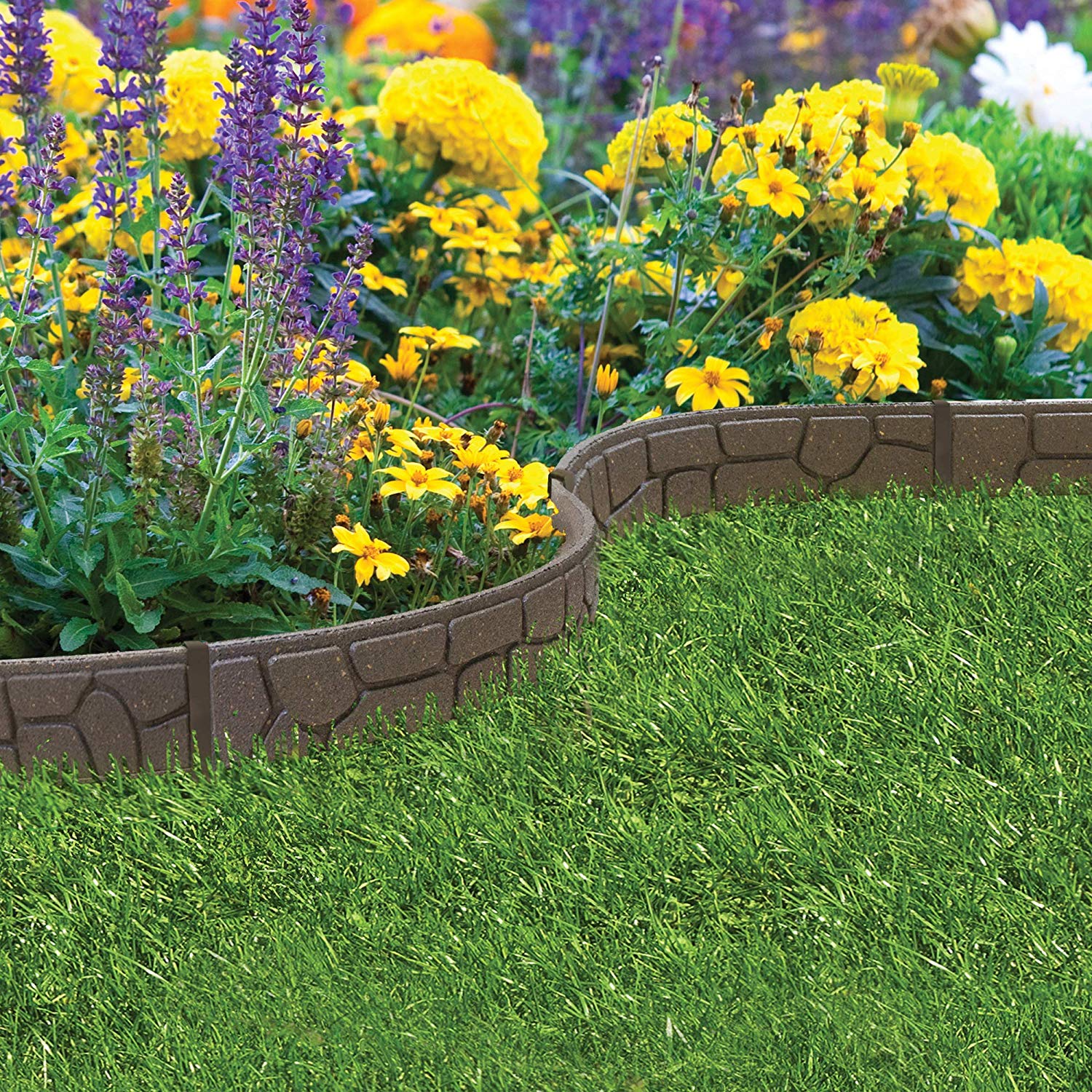
(Image credit: Waitrose Garden)
If your garden layout is lacking in definition, but you can't afford expensive 'zoning' using multiple materials and advanced landscaping, you can quickly – and cheaply – create zones in your garden by installing lawn edging around your borders and/or flower beds. Recycled lawn edging that reuses rubber tires, or plastic edging are the cheapest options, but even using fancier, real stone lawn edging options are still cheaper than a whole garden redesign.
- Find our more in our guide to lawn edging .
26. Select a decorative but pocket-friendly centrepiece
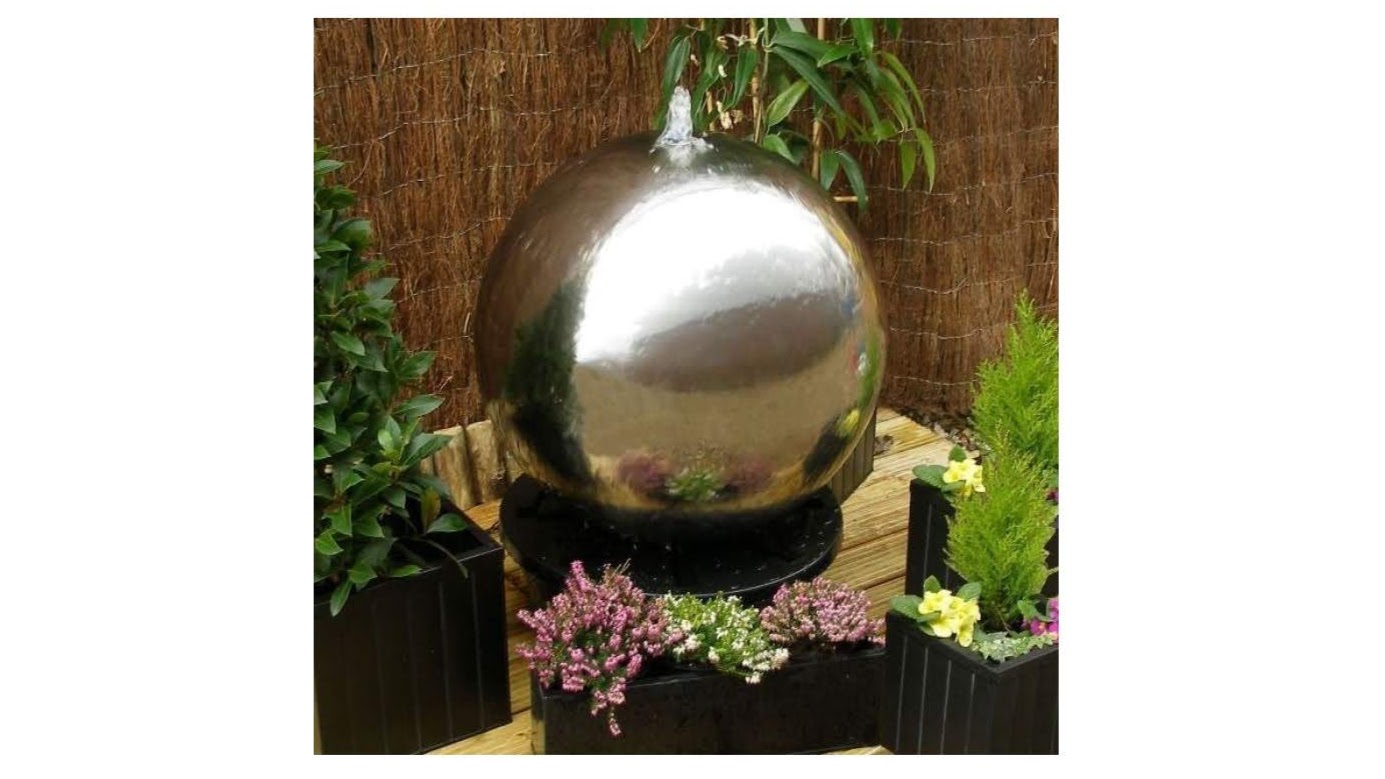
(Image credit: Primrose)
When it comes to adding special features to the garden, don't automatically assume that they're out of your budget. Garden water features in particular are a very cost effective decorative addition to the garden, and it's perfectly possible to find a decent water feature, with integrated lighting, for cheap. Water features don't use much electricity either, and some are solar powered.
- Learn more about garden water features in our guide.
27. Weed your garden (yourself)
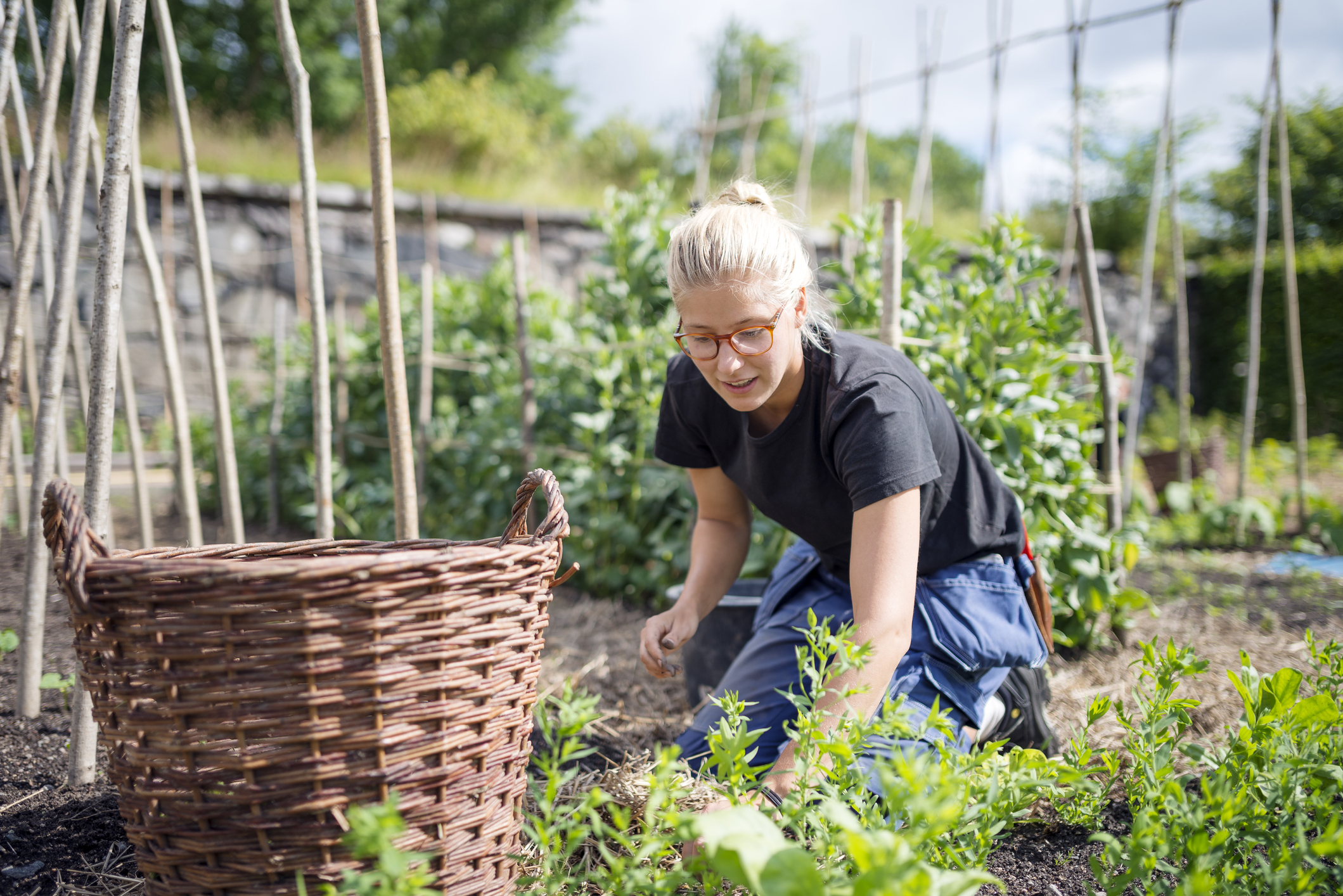
(Image credit: Getty Images)
Who doesn't love a bit of weeding? Plus, weed pulling doesn't cost a thing, but can revitalise your garden quickly and easily. It only requires one simple tool, and if you want an extra bit of power, we can help find you the best weed killer around. Wright says, 'If you have weeds in your flower beds or lawn, grabbing hold of weed puller and weeding yourself is simple and effective. Weed pullers come with a long handle, so you won't even need to kneel down; you can weed with ease standing up.'
28. Save seeds or choose self-sowing plants
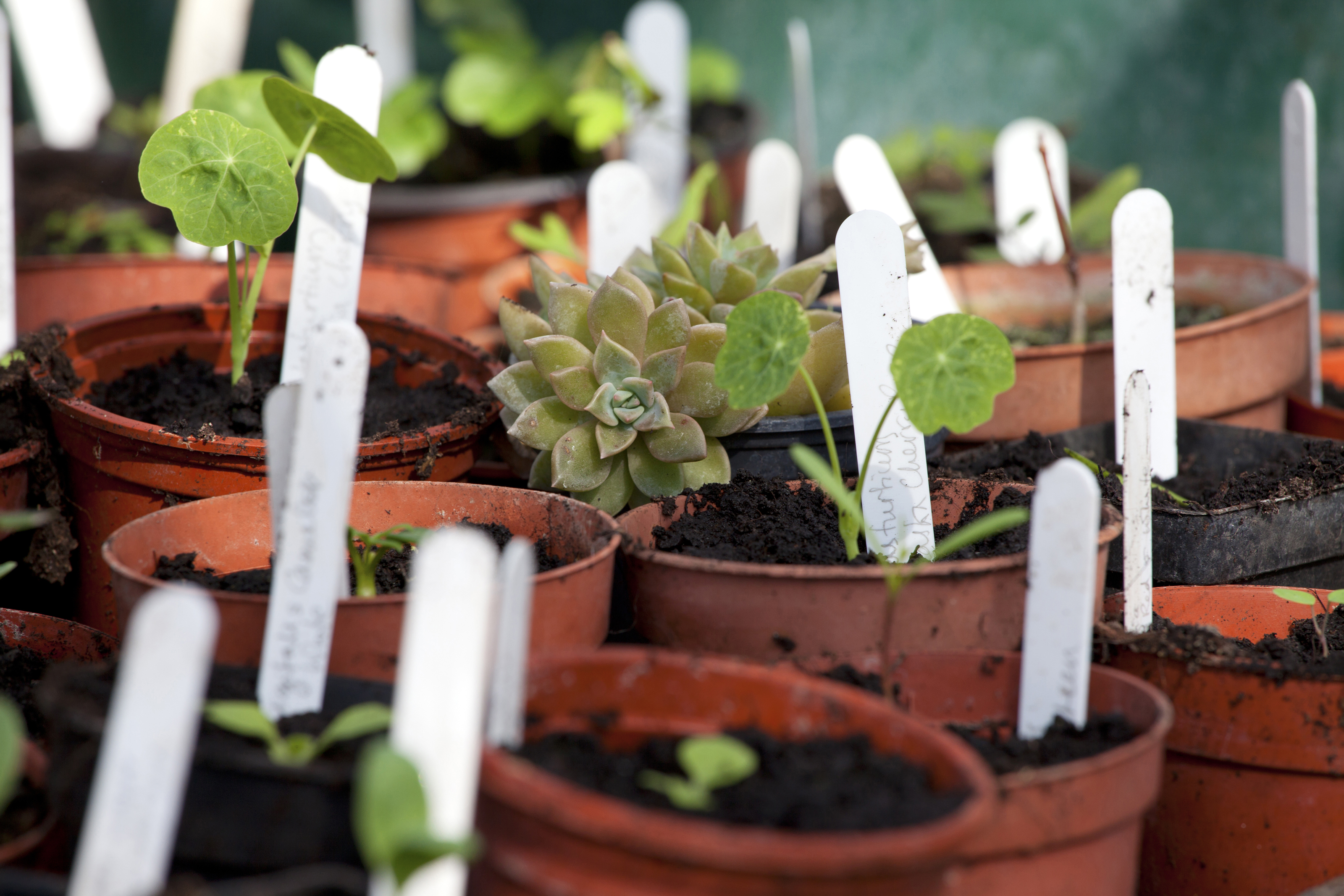
Nurture your own plants from seeds and take pleasure in watching them grow
(Image credit: Leigh Clapp)
When you're gardening on a budget, propagating plants from seeds or cuttings is a good place to start. It is far cheaper than buying small plants and satisfying too, as you watch the young plants that you've nurtured grow. You can also collect your own seeds from existing plants in your garden and increase your stock for free.
Many annuals and biennials, including foxgloves, honesty, Californian poppies and cornflowers, will readily self-sow, too, adding to your floral display for free. Just remove any seedlings that pop up where you don't want them and replant them elsewhere.
- Find more easy flowers to grow in your outdoor space.
You'd better put your gardening gloves on!
*With special thanks to discount code and charity fundraising website Savoo. Quotes: Garden Designer Ellen Wright via MyJobQuote; Julie Kilpatrick – Lecturer in horticulture and landscaping, Author of The Plant Listener, Editor at online gardening magazine Gardenzine, and Member of the Garden Media Guild; Christine Barve from Barve Garden Design.
How To Start A Perennial Garden On Shoestring Budget
Source: https://www.realhomes.com/advice/cheap-garden-ideas
Posted by: arellanoexproul.blogspot.com

0 Response to "How To Start A Perennial Garden On Shoestring Budget"
Post a Comment